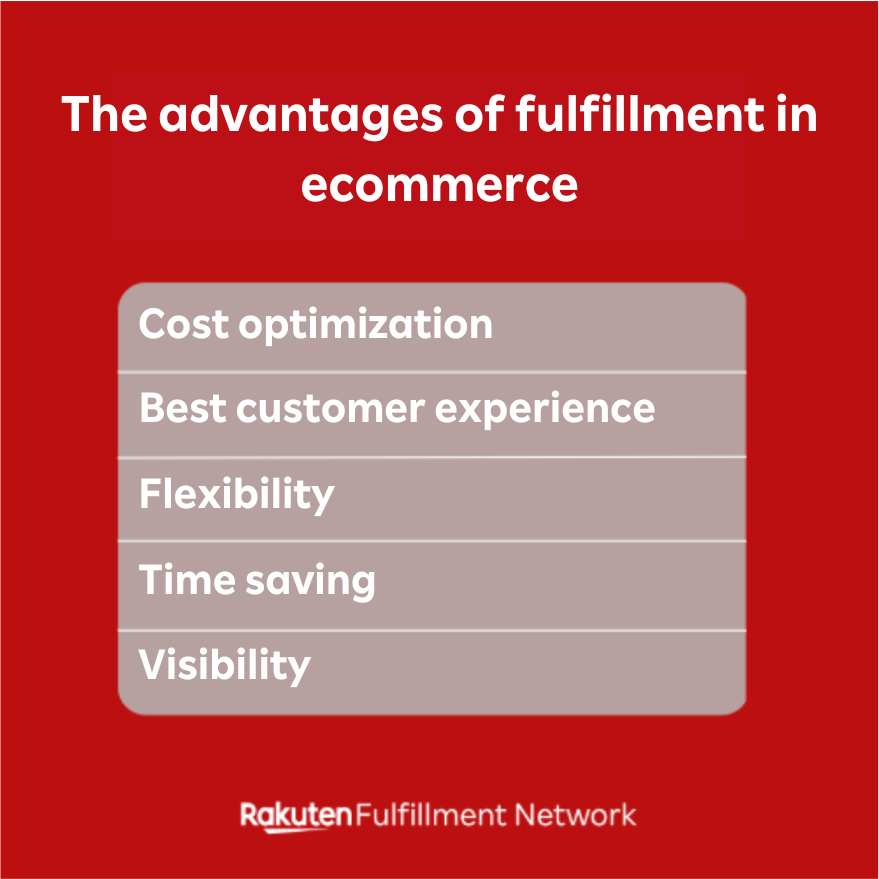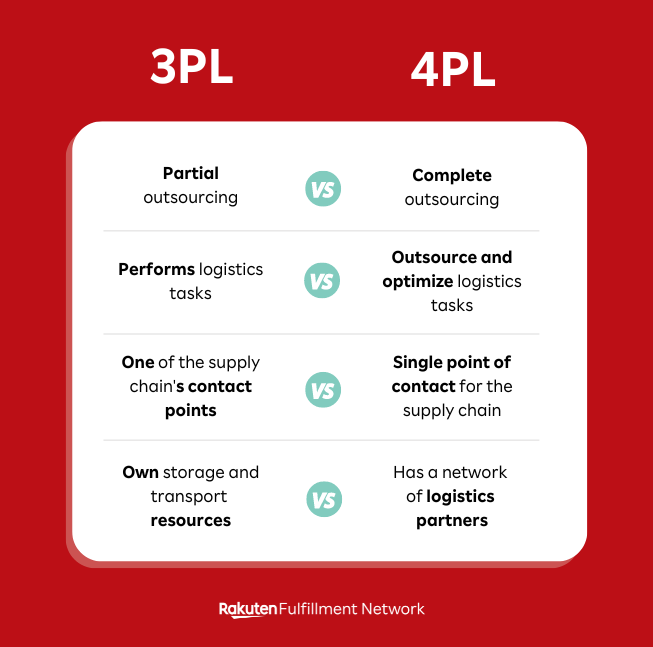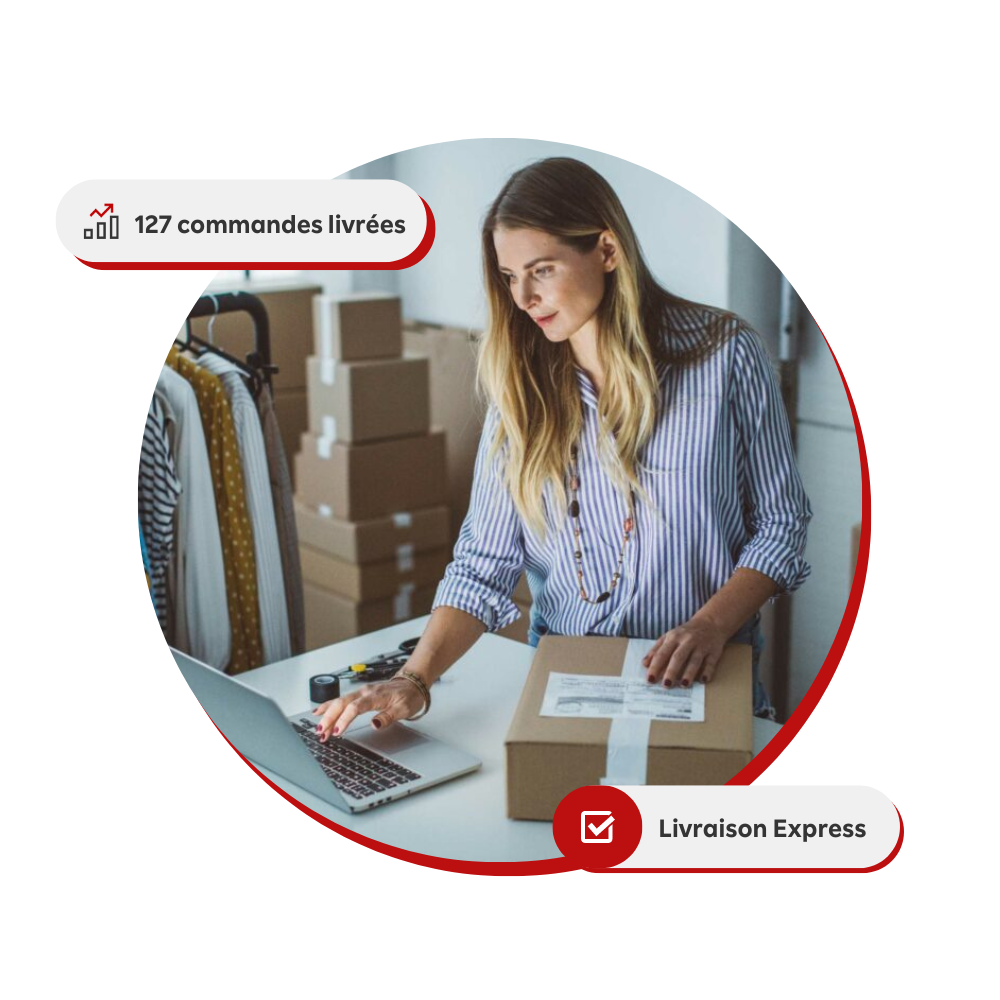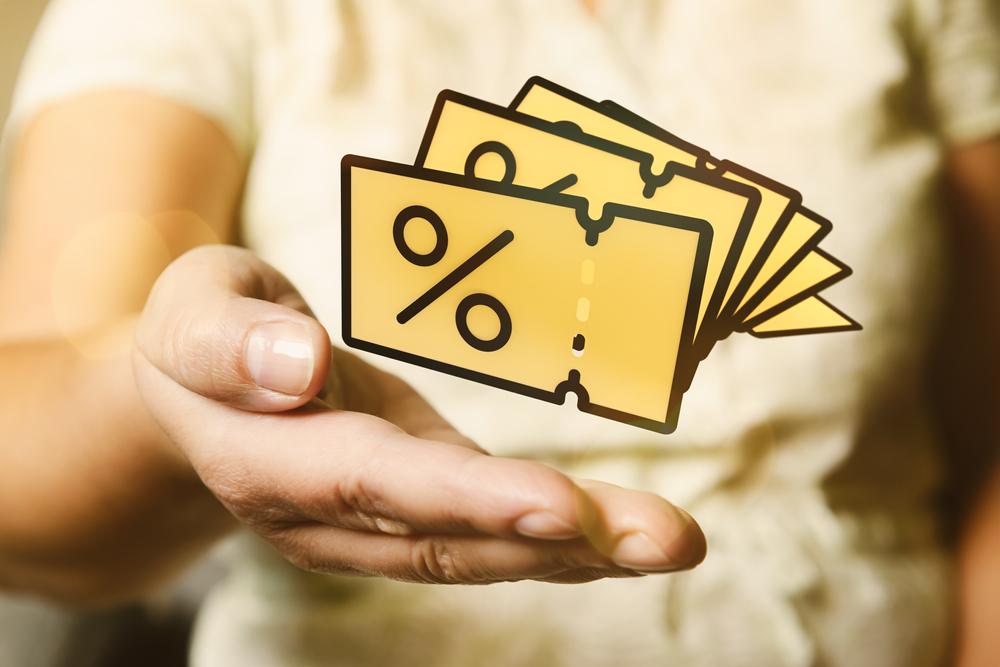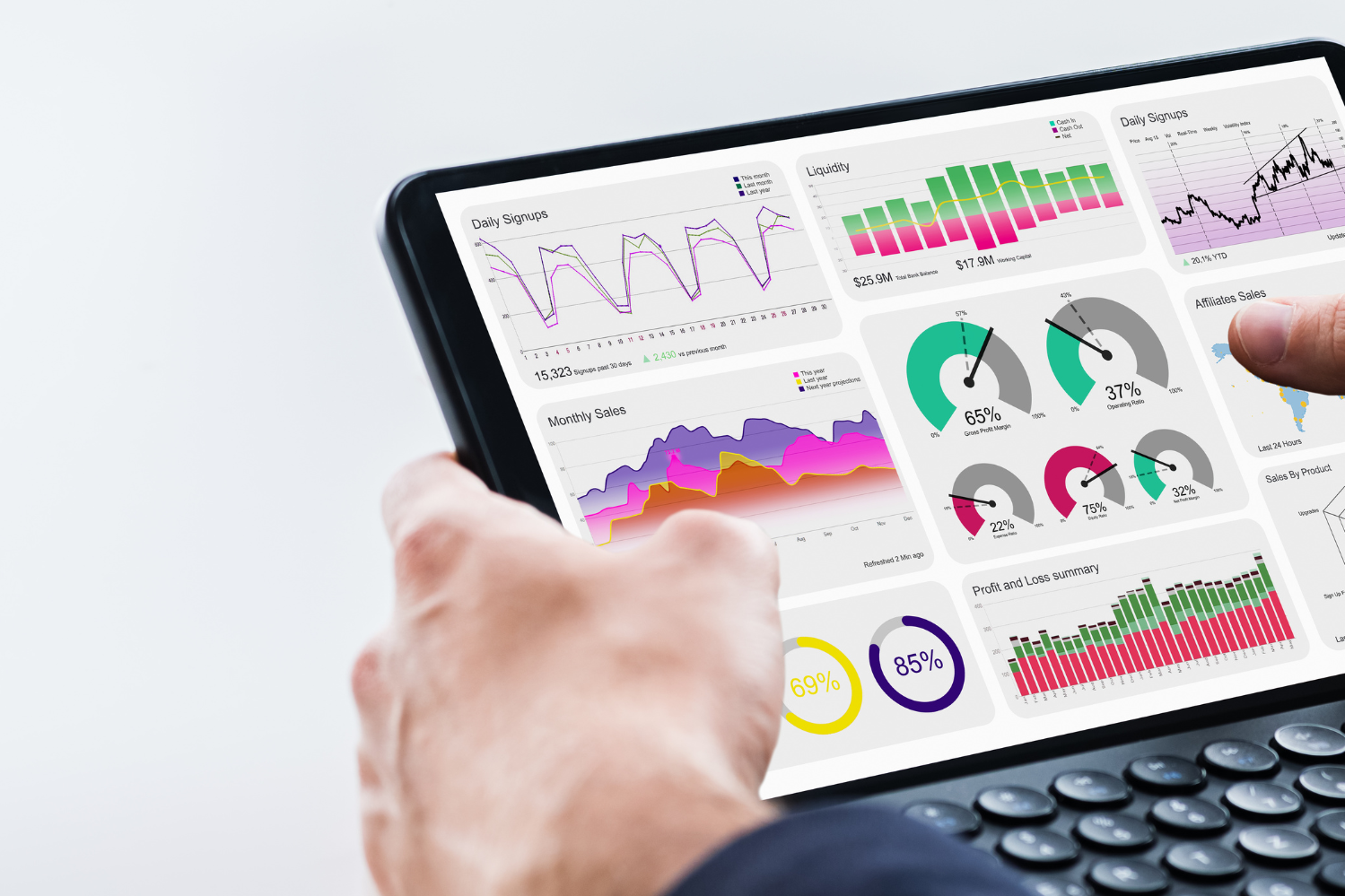Marketplace or dropshipping: which model to choose?
In the e-commerce ring, two key concepts clash. On our left are marketplaces. On the right, dropshipping.
But are these two models (really) vying for the attention of online shoppers? What are their differences? Are they complementary? And above all, should you choose marketplace or dropshipping to sell your products online?
Follow the guide, and find out all the answers from Rakuten in this article. On the program:
- Marketplace and dropshipping: definition
- Marketplace vs dropshipping: what are the differences?
- Why choose the Marketplace model?
- Dropshipping and marketplaces... How can they complement each other?
Marketplace and dropshipping: definition
What is dropshipping?
Dropshippingis a form of e-commerceinwhichthe seller has no stock of products. The system is simple: a customer places an order on an e-commerce site, which then transfers it to a wholesaler (supplier). This supplier then ships the goods to the consumer.
In this system, the seller is merely an intermediary. He does not handle inventory management or shipping. However, he remains legally responsible for the sale of products and commercial transactions.
Very popular in recent years, the drop shipping market was estimated at around $128 billion. Now booming, it should reach $301.11 billion by 2024 .And according to forecasts by Grand View Research, dropshipping is set to continue expanding: annual growth isestimated to rise by 23% between 2023 and 2030 .
What is a marketplace?
Amarketplaceis an online platform that facilitates contact between buyers and sellers .On this multi-seller site, brands can sell their products or services online, usually for a commission or monthly subscription fee.
The system is as follows: merchants create an e-shop on the marketplace to sell their products. They manage inventory and order dispatch. Some marketplaces, such as Rakuten, also offer tomanage logistics, thanks to the Rakuten Fulfillment Network .

In other words, the marketplace is a large digital shopping mall. Each store inside represents a partner vendor. Visitors (or web users) can stroll from store to store... without disconnecting from the marketplace.
Does this business model appeal to you? You're not alone. More and more e-merchants are choosing to sell their products through a marketplace, to gain greater visibility, multiply sales opportunities, secure transactions and simplify logistics processes.
The results? In 2020 alone, marketplace sellers increased their sales by an average of 24% on this channel. Growth was twice that of e-commerce (according to a Mirakl study, 2021).
Marketplace vs dropshipping: what are the differences?
1. Bringing buyers and sellers together
In dropshipping, this is the e-merchant's mission: to create a website, promote his products... and attract buyers. Although the stock of goods is released by the suppliers, it's up to the distributor to sell the products, from their own website. Marketing costs are therefore higher than with a marketplace.
A marketplace, on the other hand, facilitates the relationship between buyers and sellers. Internet users can discover different e-shops in a single location. Rakuten, for example , has 13 million loyal buyers. All e-tailers have access to this large-scale community, to boost their sales!
2. The players involved
Dropshipping and the marketplace are two tripartite models... but they don't involve the same buyers!
On the one hand, dropshipping involves a seller, a supplier and buyers. The seller sets the selling price, based on the purchasing costs negotiated with suppliers.
On the other hand, a marketplace like Rakuten involves a platform (or operator), third-party sellers and buyers. It's the sellers who manage their offers, prices and sometimes even logistics. Whether it's a B2B or B2C marketplace, the players involved remain the same.
3 . Customer acquisition costs
Customer acquisition costs are a very important e-commerce KPI. The higher this cost, the more the company has to invest to attract customers to its e-shop.
Dropshippers are considered to have a higher acquisition cost. Indeed, e-tailers need to invest in marketing, and mainly in social ads, to attract traffic and generate sales on their store.
On the other hand, marketplace e-tailers benefit from a strong audience. At Rakuten , 15 million unique visitors visit our marketplace every month. Sellers benefit from this continuous flow of customers to their ads, and save money in the process.
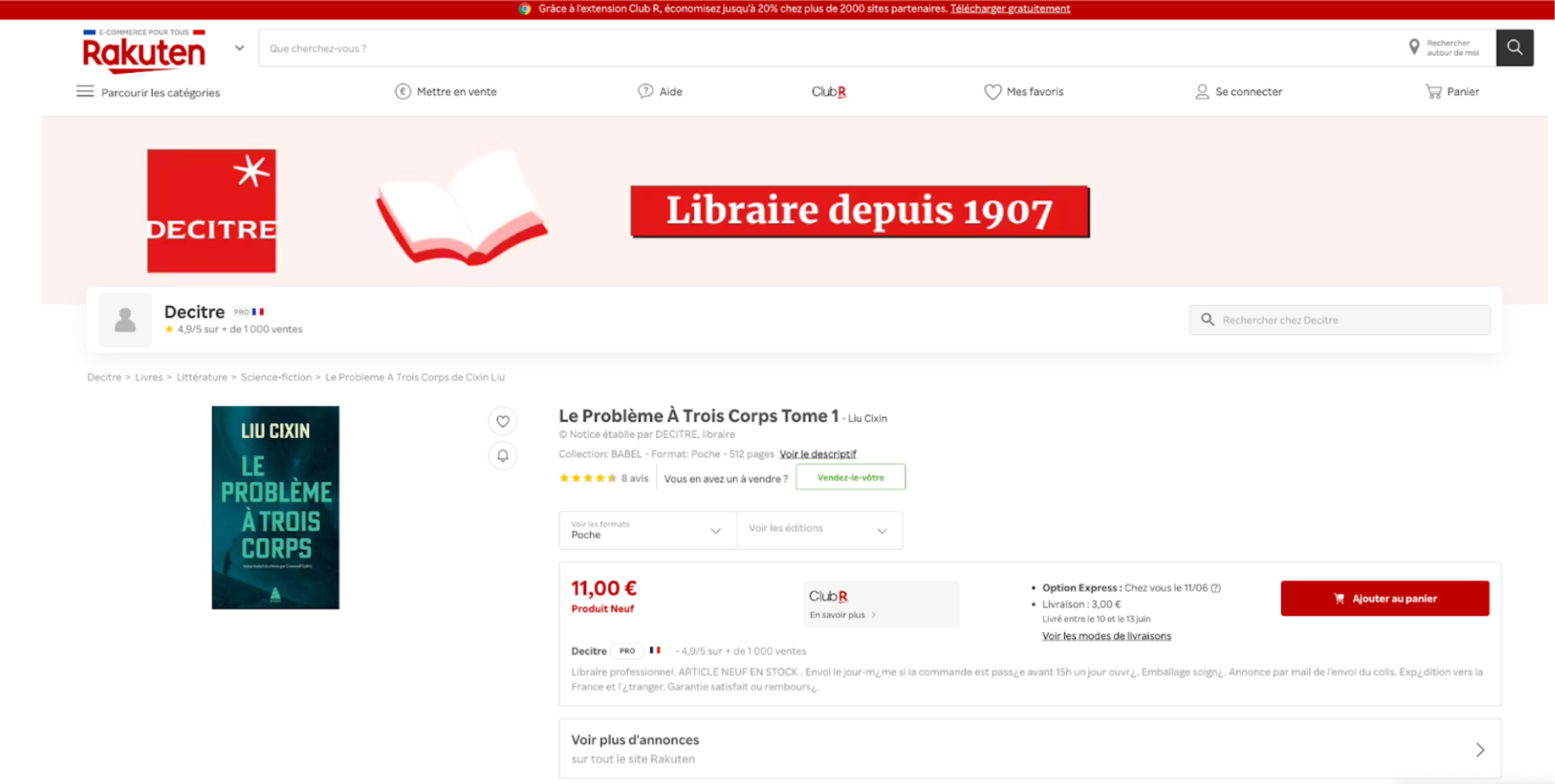 Example of an ad on the Rakuten marketplace
Example of an ad on the Rakuten marketplace
4. Logistics
Drop shipping doesn't always get good press in the eyes of consumers. One of the main reasons? The lack of transparency in logistics. Indeed, many buyers purchase a product without knowing that the sender is not the brand, but a supplier (often located on the other side of the world).
Suppliers ship products in the distributor's name, giving the impression that the product comes from the distributor. Delivery times are generally long.
Conversely, in a marketplace, the seller ships the product directly to the customer. Logistics are simpler and more transparent. With some platforms, such as Rakuten, e-tailers can even outsource logistics, on a long-term basis or for more occasional needs .
Our tailor-made logistics service supports your e-commerce expansion, without compromising customer delivery times. With Rakuten Fulfillment Network, 99.8% of orders placed before 2 p.m. are delivered within 24 hours, to satisfy even the busiest shoppers!
5. The business model
A drop-ship e-shop enables e-tailers to collect the total amount of orders placed. They then pay their suppliers. The dropshipper's profit margin is the difference between the purchase price and the selling price. Onaverage ,the profit margin varies between 45% and 65%, depending on the nature of the items sold and supply conditions .
In the marketplace, the business model is as follows: the marketplace takes a commission on sales by third-party sellers, in addition to any other fees (registration fees, subscriptions, sponsored links).
At Rakuten, our 12,000 sellers can choose between two offers :
- The starter pack, free with commissions starting at 14%
- The expert pack, €49 per month with commissions starting at 8%
Our first freemarketplaceoffer is ideal for getting started in e-commerce :
"The Starter Pack aims to facilitate access for small businesses, looking for a complementary audience, to the Rakuten platform, its ecosystem of services and its community of active members. It's in line with our promise of 'e-commerce that puts everyone on the same page', whether you're a young pure player new to the market or a long-established local business", explains Matthieu Denime, Sales Director at Rakuten France.
6. Customer service
Late delivery? A problem receiving a parcel? A question from a buyer? All these situations require the intervention of an e-commerce customer service department. In fact,itisestimated that 5 out of 10 French customers contact a customer service department for a question or an update on their delivery or order (source: Essendex survey, 2023).
In dropshipping, the distributor manages customer relations and customer service, including returns, which it then passes on to suppliers. In many cases, a contact form is set up for after-sales service.
On digital marketplaces, third-party sellers also manage returns and after-sales service. However, if they choose a marketplace like Rakuten, they can entrust us with the management of after-sales service. Rakuten Fulfillment Network takes care of resolving any logistical problems encountered by consumers. Meanwhile, sellers can concentrate on what they do best: selling.
Why choose the marketplaces model?
Ready to embark on your e-commerce adventure, and join the 207,000 online stores in France? Here's our advice on how to set up your online store safely: opt for the marketplace model to develop your e-shop. And if you're wondering "why choose the marketplace model?", here are our answers:
1. High visibility
When you join a marketplace, you're not starting from scratch to find your first buyers. On the contrary: you benefit from an already established reputation, which makes it easier to build your brand image and sell your products.
For example,Rakuten attracts 15 million unique visitors a month and 13 million recurring buyers who are members of Club R. Ideal for our 12,000 professional sellers!
2. Transparency and trust
Unlike dropshipping, marketplace customers know where their products come from. As a seller, this makes it easier to build a relationship of trust, based on transparency. This trust is the foundation for greater customer satisfaction, which in turn increases customer loyalty.
Good news for e-merchants in the marketplace, who can then make trust rhyme with growth: a 5% increase in the loyalty rate can lead to an 85% increase in profits, according to a Harvard Business Review study.
3. E-commerce highlights
Selling your products on a marketplace means taking advantage of a number of highlights, which increase traffic and sales. Infact, marketplaces organize sales events according tothe seasonality of their sales: sales, Black Friday, Christmas, Mother's Day, Valentine's Day... What's good for e-tailers at these key moments? Promotional efforts are managed by the marketplaces!
To make sure you don't miss any key dates, and to optimize your online sales strategy... Discover our 2024 e-commerce highlights guide .
4. Ongoing adaptation and monitoring
When you choose to sell on a marketplace, you benefit from total flexibility. You can quickly add new offers, enhance your bestsellers and adapt to market trends. And if a product performs less well? You can remove it in just a few clicks.
You're the captain of the ship. You navigate, you make the decisions... But you're not the only master on board! If you need advice or support to improve the quality of the service you offer your customers, some platforms like Rakuten put a dedicated team at your disposal.
At Rakuten, your store is monitored by an e-commerce consultant, who is on hand to share advice and help you boost your sales over the long term .
5. Healthy competition between sellers
On a digital marketplace, third-party sellers set their own prices. This enables dynamic updating of offers, in line with market variations. The result? This flexibility ensures constant competitiveness and rapid adaptation to changes in demand.
In order not to hinder this healthy competitiveness between the players on its platform, Rakuten has a bias: unlike other marketplaces, we don't sell our own products. By choosing a marketplace like Rakuten, you choose to sell freely... without competing with our platform, which hosts your e-shop. Our efforts are dedicated to showcasing your products, to guarantee your success.
Dropshipping and marketplaces... How can they complement each other?
Are dropshippers really the enemy of marketplace e-tailers? At Rakuten, we believe it's possible to bring together the best of both worlds. That'swhy, unlike many marketplaces, we allow our sellers to practice dropshipping, under certain conditions .
The main condition is the existence of a legal entity. This is essential to enable third-party sellers to benefit from the advantages of our marketplace, and to build maximum trust, especially with our 13 million loyal buyers.
So, whether you're a professional dropshipper or not, you now know which lever to use to launch your e-shop: a marketplace like Rakuten. By opting for a 2.0 marketplace, youbenefitfromincreased visibility, optimized offermanagementanda relationship of trust with customers .
With Rakuten Fulfillment Network, you can even outsource your logistics. So, are you ready to enjoy rapid, sustainable growth online? You're just one click away from all these benefits:
What is lead time? Definition and best practices
Lead time. Does this term mean anything to you? It's one of the most important e-commerce KPIs to master. Especially today: the commercial landscape is changing by the day, with players becoming faster, more responsive and more agile.
Lead time is the time elapsed between two key actions, such as customer purchase and delivery of goods. To maintain your place in the market, and in the hearts of your customers, mastering your lead time is essential. So, would you like to improve your sales strategy? Enhance your performance and logistics?
Follow our guide to discover, calculate and optimize your lead time.
What is Lead Time?
Lead time is a key concept in e-commerce logistics. We mainly talk about sales lead time. The definition is simple: it's the time spent between placing an order and delivery to the end customer. In other words, it corresponds to the actual time between the moment a web surfer clicks on "Buy" and the moment he gets the product in his hands.
In addition to sales lead time, there are other types of lead time, such as :
- Purchase lead time : this process takes into account the entire customer search, calculating the time elapsed between the search for a product and its final reception.
- Production lead time : this is the time spent between the start of product manufacturing and the moment when the product is ready for delivery .
- Procurement lead time : this refers to the time needed to procure goods for sale (choice of suppliers, negotiation, ordering, delivery of stock to the company, etc.) .
All these types of lead time are often associated with the notion of "cycle time". Cycle time is part of lead time: it corresponds to the time needed to complete a specific task, project or process, from start to finish.
In this article, we'll focus on sales lead time, which is the most closely followed in e-commerce... And the most important, to improve performance and stimulate growth.
How do you calculate lead time?
The formula for calculating sales lead time is :
Lead Time = Delivery date - Order date
The result is the number of days from receipt of the order to delivery to the customer. We recommend thatyoucalculate lead times for procurement, order processing and delivery for all products sold on your e-shop, based on order and delivery history .
Then move on to analysis. The shorter the lead time, the faster you can satisfy your customers. Today, speed of delivery is a major criterion when buying online. For 88% of French buyers, it's even as important as the product itself! (Source: Uber Direct and Ipsos study, 2023).
Finally, don't limit yourself to analyzing your lead time by product. Calculate and compare your different average lead times throughout the year, especially during key e-commerce periods. The results obtained in relation tosales seasonality will help you identify areas for improvement, to speed up your processes .
Why track and reduce lead time?
Your mission? Sell the right products, to the right people, and deliver them under the right conditions. In as little time as possible. Infact ,French consumers are prepared to wait an average of 5 days maximum to enjoy their purchases (source: SendCloud study, 2023).
By calculating and tracking lead time, you can :
- Improve customer satisfaction: it's the sinews of war. The faster a customer is delivered, the more likely they are to be satisfied. And the more likely you are to win their loyalty, making it easier for them to buy again! A short lead time is a guarantee of trust and reassurance.
- Strengthen your competitive edge: knowing your lead time means you can adapt your marketing strategy to promote the agility so dear to customers' hearts. For example, highlighting a maximum 3-day delivery time is a major advantage in setting yourself apart from competitors who deliver in 4 or 5 days. Eliminating intermediate steps that lengthen delivery times is the key to offering reasonable lead times that appeal to customers.
- Refine your demand forecast: the more you know about your demand, the more easily and accurately you can estimate it. Calculating lead time enables companies to draw up better logistical forecasts. This is a real asset for enjoying a more predictable cash flow, reducing your costs and improving your financial performance.
- Reduce your stock levels : a short lead time means you need to stock fewer products. Conversely, the longer the lead time, the greater the stock of stored products. Calculating and optimizing this KPI is therefore essential to improve your inventory management...And reduce your storage costs.
Factors influencing Lead Time
While reducing lead time is becoming a priority for many e-tailers, it's not a task that can be achieved by snapping a few fingers. Despite the good will of professionals, certain factors influence lead time. Knowing what they are means you can act more effectively when they arise, or anticipate them. These include
- Human error: miscommunication with a supplier, lack of training for an employee, forgetting a key piece of information... All these human errors are common. The solution is not to eliminate the human element from your sales cycle, and automate everything... But to support it as best you can, to limit errors.
- Geographical location: where is your company located? Where are your suppliers? Your warehouse? Your customers? By locating all these stakeholders, you can identify whether or not your supply and delivery chain is too complex. The further away these different locations are, the more your lead time will be impacted!
- Natural events: floods, earthquakes, storms, etc. are difficult to prevent and have a negative impact on lead time. To cope with them, we advise you to diversify your manufacturers, strengthen your inventory systems and anticipate potential action plans.
- Seasonality of sales : certain periods such as sales, vacations, Christmas or Valentine's Day can increase demand for products to be produced and delivered, and thus impact lead time. Anticipating which days are working days and public holidays also makes all the difference, so that customers can be satisfied.
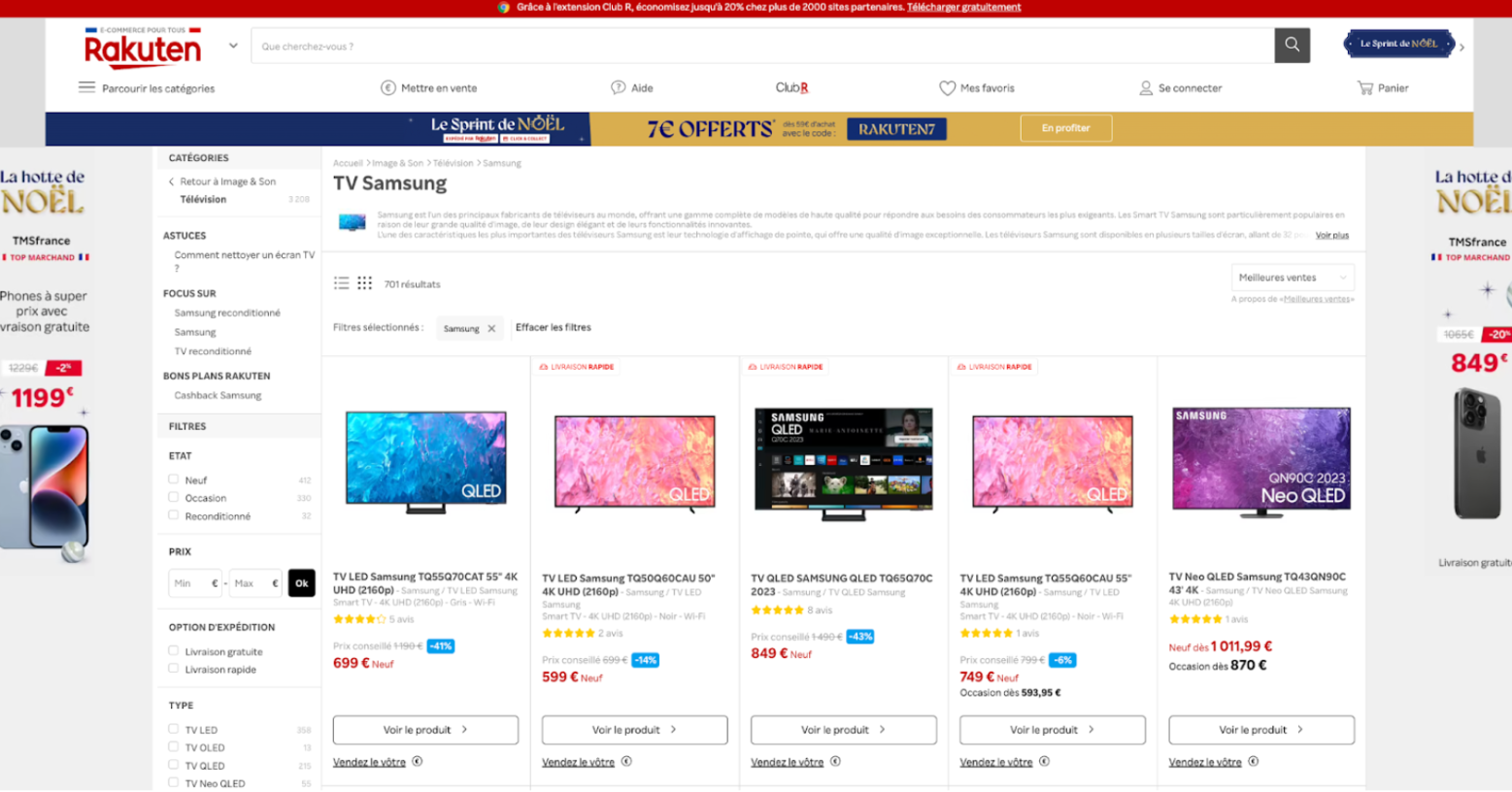
You now know how and why to calculate your lead time. You also know the criteria that can increase or decrease your lead time. Now it's time for an action plan: here's how to optimize your lead time, and boost your company's performance.
How to optimize your lead time?
Here are 3 techniques to reduce your lead time, and thus contribute to the growth of your e-commerce business:
-
Use technology as an ally
As we said earlier, removing people from your processes is not the solution. On the contrary, combining people and technology is a winning strategy for improving your processes!
Specialized logistics software will help you to better manage unforeseen events, track inventory in real time and centralize all information concerning your supply chain. A demand forecasting tool is particularly useful, to anticipate variations in orders and adjust production accordingly .
You can also opt for a Warehouse Management System (WMS) to optimize logistics flows, manage inventory and monitor processes. Then, for transport management, a Transport Management System (TMS) helps optimize this part of the logistics chain, to improve transport conditions and reduce delivery times .
Whichever solution you choose, always opt for a centralized IT space, to avoid multiple spreadsheets and chains of e-mails sent to logisticians. This is what we offer our marketplace sellers , with Rakuten Fulfillment Network. It's a practical way to manage all your logistics in just a few clicks... while entrusting us with packaging, order dispatch and much more besides:

2. Maintaining good relations with suppliers
When we think of "lead time", we think first and foremost of delivery to consumers. But before that, don't forget that this indicator also takes into account other logistics components, such as production and the delivery of goods by suppliers. Without these stages in the sales cycle, there can be no final delivery, and no customer satisfaction and loyalty!
Since suppliers are an integral part of your overall lead time, take care of your relationships. Good communication and collaboration reduce the risk of inefficiencies. Trust, transparency and exchange also improve the transmission of information, flexibility and fluidity of operations .
3.Reduce contact points
Yes, the quality of the relationship with your service providers counts. Unlikethe quantity and multiplication of logistics service providers! To reduce your lead time, it's in your interest to reduce your points of contact. Rather than going through 5 different contacts, each responsible for a different link in the supply chain... Have you considered using a 4PL provider?
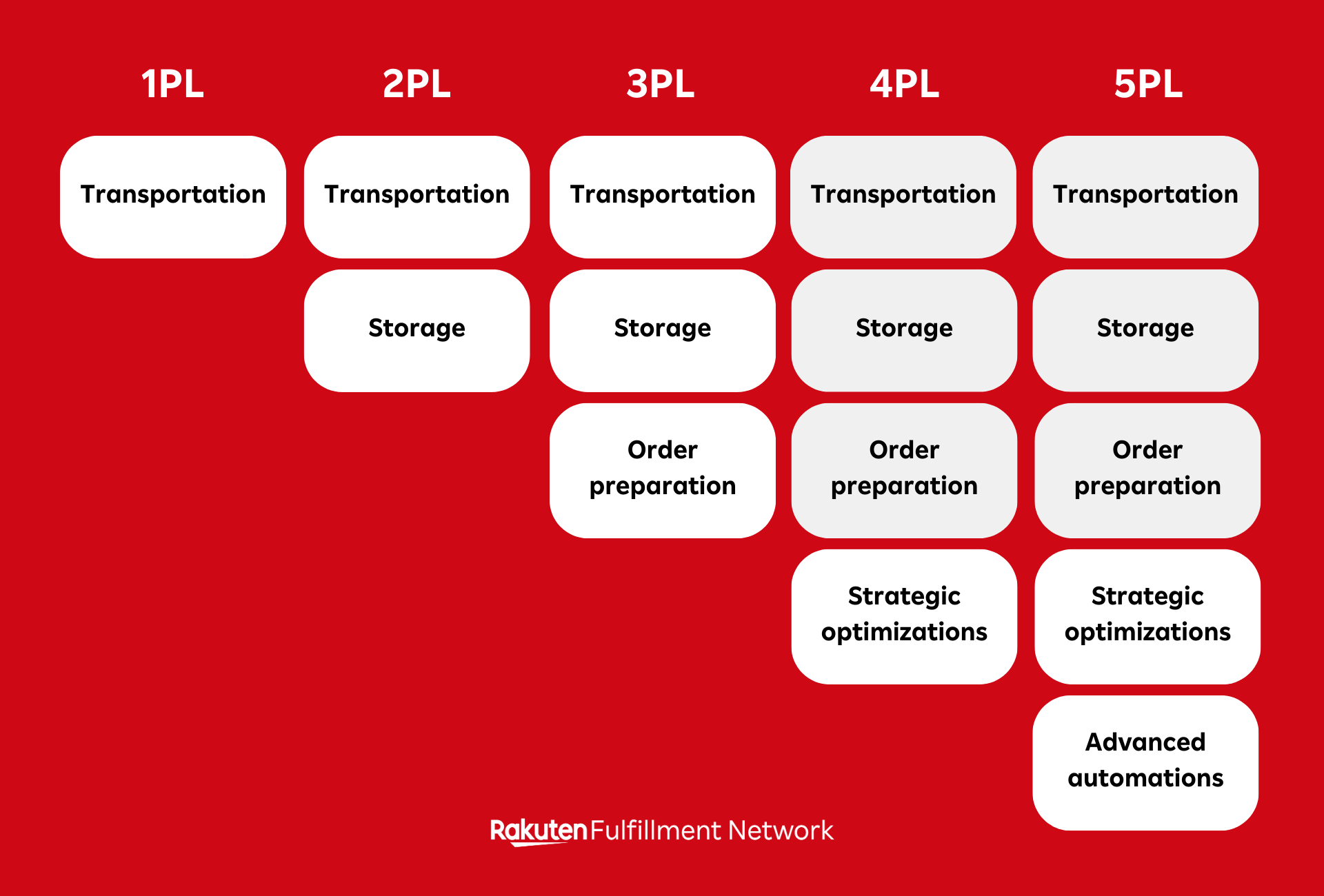
A 4PL (Fourth Party Logistics) providerisan intermediary in charge of a company's entire logistics. Its aim is to manage and optimize the entire supply chain. It acts as a single point of contact for all logistics issues, managing all links in the chain (carriers, warehouses, after-sales service, etc.) and all stages (storage, preparation, dispatch, customer returns).
Thisiswhat we offer with RakutenFulfillmentNetwork. Our turnkey solution, with no hidden costs, takes care of every stage of your e-logistics. Your customers are satisfied, your schedule is relieved. And you can (finally) concentrate on what you do best: selling.
With Rakuten Fulfillment Network, you benefit not only from improved lead time, but also from :
- 25% more time for your business
- 25% average savings on logistics costs
- 99.8% of orders placed before 2 p.m. are delivered within 24 hours, to ensure customer satisfaction
Ready to join the 12,000 professional sellers on our marketplace and offer your products to our 13 million regular buyers? To set up your own e-shop and place your trust in a reliable logistics partner, click here:
D2C logistics: definition, challenges and optimization keys
160 billion euros will be spent online by 2023, according to FEVAD. E-commerce continues to boom, with one key model on the rise: direct-to-consumer (D2C) sales. The principle? Sell products or services directly to consumers, without intermediaries.
However, the growth of this model brings with it a number of challenges, particularly when it comes to logistics. How can we improve inventory management? How to optimize the supply chain? How can we maintain a high level of customer experience and satisfaction?
Find out all the answers in this article. D2C logistics will soon hold no secrets for you!
1. What is the D2C model?
Sézane, Le Slip Français, Gemmyo... You've probably heard of these successful brands. What makes them special? A business model based on direct-to-consumer. In fact,these companies rely to a large extent ona strategy of direct sales to consumers, without going through intermediaries .
This modern form of commerce is becoming increasingly common in sectors such as the automotive industry. Tesla, for example, concentrates on selling its vehicles directly, without going through dealer networks. Thermomix and Tupperware also made their name through direct sales, this time to the home. Finally, many mattress brands such as Emma, Tediber and Casper have also relied on D2C to develop their business. In short: D2C is a multi-sector model.
There's no longer any need to rely on distributors, wholesalers, supermarkets and hypermarkets... Direct-to-consumer allows for a more personalized, direct relationship with buyers.
It is also a guarantee of flexibility, and often profitability, thanks to higher margins. For a behind-the-scenes look at this business model, see our article: D2C: advantages, challenges and keys to success in direct sales.
2. D2C logistics
Logistics: an essential link in the chain of success!
80% of consumers are expected to make at least one purchase via a D2C brand in the next 5 years. But to guarantee a quality experience, here's the key success factor: logistics (or fulfillment).
In e-commerce, logistics refers to the entire process of storing, managing, shipping and delivering a company's products. Theaim of logistics is tosuccessfully manage the entire physical flow of products to the end consumer .All these links in the logistics chain have a direct impact on the user experience. Where fast delivery makes for greater customer satisfaction, a delay in delivery or a packaging problem can be a major turn-off..
This is one of the key success factors for D2C brands: successful logistics. And to achieve this, companies have several solutions. They can choose to manage all logistics in-house, or outsource all or part of it. In both cases, the challenges are numerous..
Logistics challenges for D2C brands
The objectives of direct-to-consumer logistics are to :
- Predict and anticipate customer demand
- Manage product supply and storage
- Process orders
- Control delivery costs and lead times
- Track parcels
- Handle after-sales service and any customer returns
Faced with these objectives, the main challenges for D2C retailers are to minimize logistics costs and components. In particular, storage, transport and product availability. The question to ask is: as an e-retailer, are you capable of managing all logistics on your own? Or would you rather concentrate on what drives you most: selling?
Indeed, D2C sales are not incompatible with the creation of logistics partnerships! Quite the contrary, in fact. To meet the challenge of developing their direct sales business, many e-tailers rely on logistics partners like RakutenFulfillment Network.
3. Supply chain: how is flow management organized?
Logistics and supply chain are often confused. Let's remember the difference: logistics is part of the supply chain process. Where logistics is concerned with the movement and maintenance of products (in and out of the company), the supply chain is the strategy that coordinates and manages the entire supply process .
The supply chain is a means of linking all the players in the supply cycle, from production to delivery. In addition to coordinating producers, logisticians, carriers, etc., the supply chain is divided into 4 major flows:
- Physical flow: supply, transport and storage of goods.
- The information flow: all the data (or Big Data) that drives the physical flow.
- Financial flow: all transactions carried out both externally (with partners, suppliers or subcontractors) and internally, within the company .
- Administrative flow : all documents circulating between supply chain stakeholders.
To better understand the role of these flows and optimize them for optimal logistics management, take a look at our dedicated guide: how to improve your e-commerce supply chain?
4. How to optimize your D2C logistics strategy?
Measure and monitor current performance indicators
Do you know whether your e-commerce strategy (and therefore your current logistics) is contributing to customer satisfaction? Are they complaining about late deliveries or making complaints?
To optimize your logistics process, the first step is to observe your customers' needs, measure their current satisfaction and your results. Key KPIs to track include :
- NPS
- CSAT
- Sales figures
- Sales margin
- On-time delivery (OTD)
- Product return rate
- Inventory turnover rate
- Cost per unit delivered
And all the indicators can be found here: the 11 key KPIs for maximizing your e-commerce success .
In addition to quantified KPIs, take an interest in your customers' qualitative feedback. What are their satisfaction or dissatisfaction criteria? Product packaging, delivery time, place of manufacture, delivery method... All these elements are linked to your logistics, and can be optimized according to the feedback received by your customer service or shared in online reviews.
This regular monitoring enables you to measure
oosing the shared logistics option
the impact of your e-commerce strategy, from a financial and customer point of view. Depending on the figures and customer feedback, you'll probably have to rethink the evolution of your logistics.
Here's an example of logistics optimization: pooling. Pooling logistics enables you to optimize the supply chain, from receipt of goods to delivery to the end consumer. Examples of pooled logistics include the sharing of storage warehouses between several companies, or the pooling of delivery vehicles.
This form of logistics is on the increase because it meets retailers' expectations, particularly in terms of cost reduction. Smaller, urban logistics centers are also emerging. Practical, to bring products closer to customers and meet environmental constraints.
Opt for outsourced logistics
D2C places customer proximity at the heart of its business model. To maintain this proximity over the long term, it's essential to take care of customers, listen to them, offer the best products... But it's difficult to be on all fronts when you're an e-tailer. That'swhy outsourced logistics is booming: it enables brands to concentrate on selling their products and their customers. While logistics service providers take care of all or part of the logistics .
There are different types of logistics provider:

So, have you thought about outsourcing your product storage and transport, with a 2PL (Second Party Logistic) partner? Or entrusting transport, storage, order picking and strategic optimization to a 4PL provider?
There are many advantages tousing one of these forms of outsourced e-commerce logistics:
- Lower costs : savings are passed on not only in structural costs, but also in staff recruitment. By reducing internal logistics costs, you improve your profitability. An important point, at a time when almost 12% of e-tailers are unprofitable due to logistics costs linked to distribution, in particular! (Logistics Bureau)
- Saving time : outsourcing your logistics gives you the time to concentrate on your core business. So you can develop your product, marketing and sales strategy without pressure.
- Greater customer satisfaction : entrusting your logistics to experts also means benefiting from their know-how. This reduces the risk of problems linked to product loss or delivery errors. A partner like Rakuten Fulfillment Network can even help you reduce your delivery times: when you know that delivery times are the second leading cause of shopping cart abandonment on e-commerce sites, according to Sendcloud (2023)... It's a good idea to do everything you can to convert your customers, then build their loyalty over the long term!
5. Rakuten Fulfillment Network: an asset for D2C
For the past ten years, Rakuten has been helping brands capture the hearts of their customers through a D2C approach. Companies like Emma, SEB and Kusmi Tea rely on our marketplace to speak directly to their buyers... And to our 13 million regular buyers.
In addition to the marketplace, Rakuten offers a whole range of services, such as the Rakuten Fulfillment Network. The principle is simple: you entrust us with your logistics. We manage it for you. And you benefit from the results, such as an average saving of 25% on your logistics costs!
Rakuten Fulfillment Network takes care of the storage, packaging and shipping of your products: you choose, our logistics service is flexible and scalable to your needs. You can, of course, controlalllogistics remotely, and keep a real-time eye on your inventory from a centralized location .
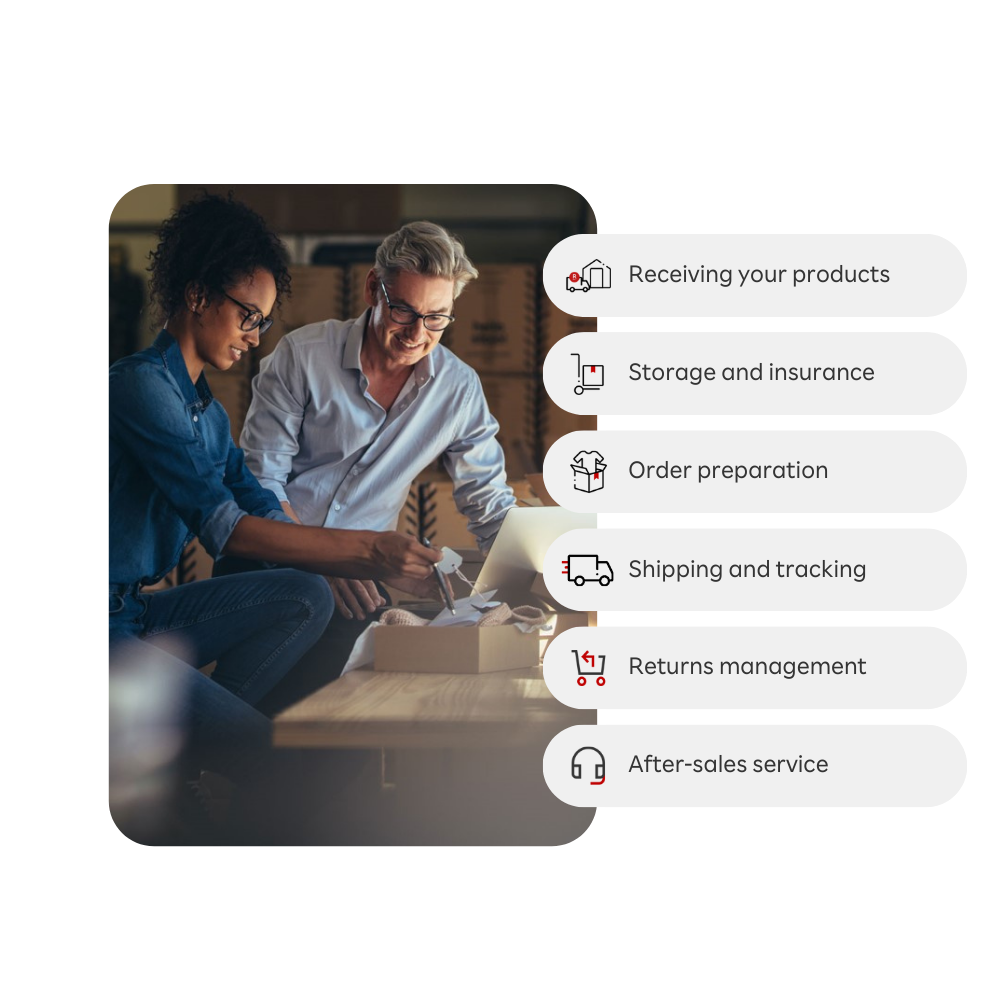 Thanks to this logistics partnership, your customers also benefit from quality service. 99.8% of orders placed before 2 p.m. are delivered within 24 hours, to the delight of your busiest customers!
Thanks to this logistics partnership, your customers also benefit from quality service. 99.8% of orders placed before 2 p.m. are delivered within 24 hours, to the delight of your busiest customers!
You've got it: with Rakuten Fulfillment Network, you don't have to worryaboutstock-outs, packaging or shipping. Our network of warehouses and logistics partners is there for your products. We manage the logistics of your e-shop for you, and you benefit from a real competitive advantage over other D2C brands.
In addition to standing out from competitors and satisfying customers, some brands that choose Rakuten Fulfillment Network even multiply their sales by 10! Let's find out more.
6. D2C logistics: the case of Dreame
Dreame is a Chinese company specializing in high-end household appliances. As the company seeks to conquer the French market, it faces a major logistical challenge: delivery times .
Before placing its trust in Rakuten Fulfillment Network, Dreame's delivery times were between 7 and 10 days .Yet, according to McKinsey, 44% of buyers say they don't want to wait more than two days to receive an order! To speed up and simplify its entire logistics process, Dreame joined the Rakuten Fulfillment Network.
Results:
- 5x faster delivery: from 10 to 2 days, from China to France!
- A 10-fold increase in sales: thanks to more attractive delivery times, French customers are more likely to buy, which considerably boosts the company's sales.
- 200-fold increase in visibility: by selling on our marketplace, Dreame has access to over 13 million connected customers. This increases visibility, credibility and brand awareness.
Would you like to take advantage of a turnkey logistics service for your D2C business? Follow in Dreame's footsteps, and turn your e-commerce dreams into reality:
D2C: advantages, challenges and keys to success in direct sales
It's a model that appeals to consumers and brands alike: Direct-to-Consumer (D2C). Booming in recent years, this business model is simple. It enables a company to sell its products or services directly to consumers, without any intermediaries.
By 2022 ,57% of multinational companies had invested heavily in this strategy. As for buyers , 80% are expected to make at least one purchase via a D2C brand in the next 5 years. The revolution is underway, especially in the world of e-commerce. But what are the keys to the success of this Direct-to-Consumer model? All the answers from Rakuten are in this article.
I. Differences between B2C, B2B and D2C
The Direct-to-consumer model breaks the codes of traditional commerce. What makes it special? Itenables brands to sell their products directly to consumers, without the need for distributors, wholesalers or supermarkets. More commonly referred to as D2C... not to be confused with other acronyms, such as B2B and B2C.
B2C refers to the direct sale of products or services from a company to an "individual" consumer. Nike, Le Slip Français or Zara are "Business to Consumer" brands.
Conversely, B2B corresponds to transactions between companies. We speak of "Business to Business". For example, Salesforce is a B2B company, selling its software to other companies.
II. What are the advantages of the D2C model?
By choosing the Direct-to-Consumer model, brands establish a direct relationship with their customers. There are no intermediaries to disrupt the buying experience, which not only promotes proximity, but also personalization of the relationship .
Data collection is also direct, enabling the company to get to know its customers better, so as to offer them offers as personalized as the relationship itself. The company can easily demonstrate continuous improvement, and innovate to rapidly improve customer experience and satisfaction .Total control!
What's more,a D2C business has great flexibility: it's free to set its own prices, regardless of the margins of certain intermediaries. This flexibility has an impact on the company's profitability, since it can achieve a higher margin on its products.Stock-outs are also less frequent. Finally, a D2C company can also accelerate the time-to-market of its products, and grow faster..
If the D2C strategy is effectively executed. But this model isn't magic: there are many challenges to overcome!
III. Challenges of the D2C Model
In the retail sector, and especially in e-retail, the D2C model poses a number of challenges. Whether you're a new Direct-to-Consumer brand, or a company already on the market that wants to move towards this approach.
Let's take the example of a brand that wants to launch its own online store, selling directly to consumers. The work involved is colossal: investing in the right technological platform, recruiting a team, building and maintaining the entire brand image, guaranteeing quality customer service... This is not an approach to be taken lightly!
In today's saturated digital space, developing a visibility strategy can be perilous. And costly. How do you stand out from the competition? How can you attract new buyers with a sound marketing and communications strategy, without incurring extra costs?
And then there's the question of logistics. Will you be able to manage the ordering, stock management and delivery system? Quite often, brands prefer to rely on a logistics solution, such as Rakuten Fulfillment Network, to manage this part of their business.
A logistics service of this kind cuts costs, offers responsive customer support, and takes care of packing, shipping and tracking orders and stock. Perfect for focusing on what a D2C brand does best: selling.
IV. Key success strategies for D2C companies
- Creating a targeted marketing strategy
The Direct-to-Consumer approach requires you to know your customers inside out. Once you've created your marketing persona, you'll be able to develop a targeted marketing strategy .
It's an essential step if you want to get to the heart of your customers! And this is where the most successful D2C stores stand out. They avoid mass marketing, in favor of personalized campaigns. They also createengaged communities on social networks, with consumers who share the same values .
Within these communities, the most loyal customers often become ambassadors. They are the ones who take over the brand's marketing actions, thanks to word-of-mouth and the creation of UGC (User Generated Content).
One of the key success factors for D2C companies is therefore the power of their marketing, and the commitment of their community, particularly online .
- Delivering a flawless user experience
Consumers have too often been disappointed by brands that don't respect their commitments... Like delivery time. 57% of online shoppers consider delivery time to be an important criterion in their purchasing decision (source: Fevad). So, where brands with a D2C model stand out is when they honor an irreproachable customer journey. From A to Z.
Indeed, successful Direct-to-Consumer brands tick all these boxes:
- An e-commerce site with a simple, fluid customer journey
- A responsive design, on computer, mobile and tablet
- A reliable payment system
- Personalization throughout the purchasing process
- Impeccable customer service
This last point is essential, to contribute to the e-reputation of online stores. 55% of consumers are ready to recommend a company if its customer support is exceptional, according to Zendesk .
- Develop a data-centric approach
46% of D2C brands rely on consumer data to personalize the customer experience and improve the buying journey, according to Stirista (2021). Companies that favor direct sales have understood: better customer knowledge is a key success factor!
As long as information gathering is carried out in compliance with RGPD rules, brands have every interest in becoming "Data Centric". Data linked to purchasing behavior and preferences allow us to better understand our customers... And anticipate their needs.
Indeed, successful D2C brands no longer hesitate to develop a predictive approach, to improve the shopping experience. Predictive analysis also helps toanticipate demand, and thusimprove inventory management and the supply chain. A real winning bet, to minimize risk and maximize profitability.

V. What does the future hold for the D2C model?
Direct-to-consumer commerce is often heralded as the future of e-commerce. The DNVB and ONVBbrands are contributing to the growth of this ecosystem, combining a 100% digital and 100% direct presence . On a larger scale, 80% of brands (who are not necessarily D2C) believe that this model has an impact on their business, according to a study by Club CMO and Epsilon-Conversant. The conclusion is clear: Direct-to-Consumer is a golden opportunity, but also seen as a threat, for more traditional players.
In the post-Covid era, this trend towards D2C commerce has increased in particular. And with the rise of e-retail and increasingly connected consumers, forecasts seem rather optimistic: this model should continue to develop... Under certain conditions.
First of all,ignoring technology will no longer be an option. Equipping yourself with the latest technologies, to deliver a unified omnichannel experience, will become a necessity. What's more, the D2C model should evolve towards a more open form: tomorrow, the idea will no longer be to refuse all intermediaries... But rather toaccept intermediaries who take growth to another level, without compromising the direct relationship between brand and buyer.
This isprecisely what the 12,000 professional sellers, who offer their products to 13 million buyers, can find on our Rakuten platform. Thanks to the Rakuten Fulfillment Network, brands can benefit from improved D2C logistics... while maintaining a quality relationship with their buyers.
VI. Examples of successful D2C brands
There are many success stories in the D2C world. They cover a wide range of sectors. Ready-to-wear brands includeSézane and Le Slip Français. In bedding ,Tediber. In eyewear ,Jimmy Fairly. Or Miliboo, for furniture. Some brands, such as Bergamotte, are even breaking new ground in the very traditional world of florists .
All these brands rely on digital channels (website and social networks) to make themselves known... and recognized. Most are also banking on a recurring revenue stream, thanks to subscription sales.
At the same time, other success stories are emerging in D2C, from larger, more traditional players. This is particularly true of certain sports brands, which are making the transition to this more direct model.
For example, by positioning itself more on the direct sales market, Nike multiplied its D2C sales by 6.6 between 2010 ($2.5 billion) and 2021 ($16.4 billion). This represents just under 40% of its overall revenue stream. Which means that 60% is still generated by relying on key partners (physical or online resellers). And that reminds us of another success story..
Image source: Inside, 2023.
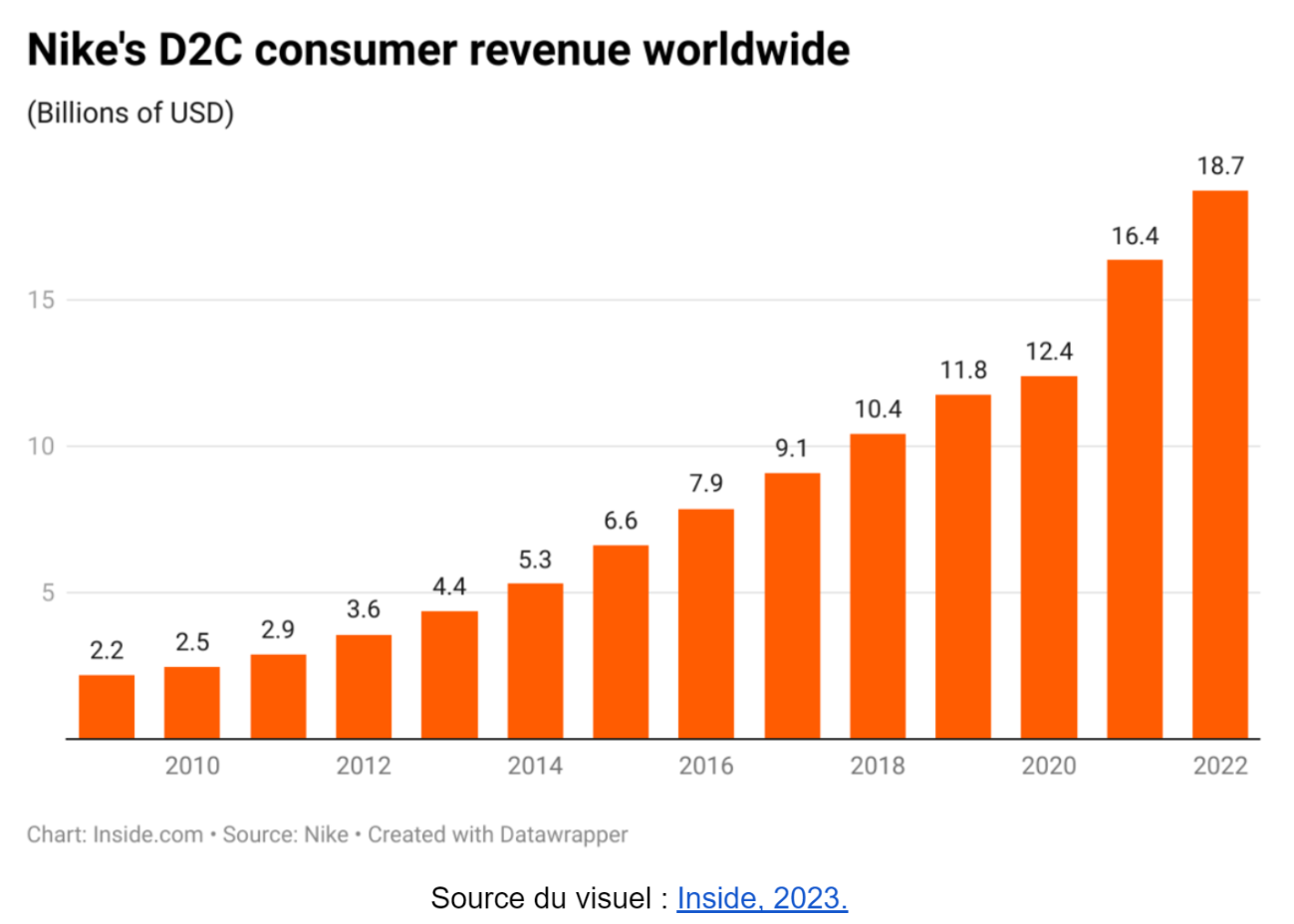
VII. Rakuten and Direct-to-Consumer
For decades, Rakuten has been helping brands capture the hearts of their customers through a D2C approach. Brands such as Kusmi Tea, Emma and Proline have chosen our marketplace to address their customers directly.
What motivated their choice: the possibility of creating a real sales and communication channel within our marketplace. Indeed, every Rakuten seller can create a personalized e-shop, to control their brand image, improve the customer experience and highlight their best offers.
In this way, brands create their own highlights on Rakuten. This is the case for Groupe SEB, which has created the 7 jours imbattables: a week dedicated to products from the Rowenta, Moulinex and Tefal brands, promoted to our 13 million recurring buyers.
Joining forces with a partner like Rakuten enables us to meet the major challenges of D2C, thanks to an already large and loyal audience and ready-to-use communication channels.
Rakuten: a key partner for your D2C strategy
Today, marketplaces play a central role in business growth. by2022, 67% of e-commerce sales will have been made on marketplaces, making them a significant sales channel, especially for D2C brands .
For example, by becoming a seller on our Rakuten marketplace, an e-commerce player can reach 13 million regular buyers. And unlike most marketplaces, we don't sell products: all our efforts are focused on your success, directly with your customers!
In addition, Rakuten offers a whole range of services, from e-commerce logistics with Rakuten Fulfillment Network (the leading marketplace for 4PL logistics) to drive-to-store. You give your products the visibility they deserve, and we take care of the rest. Packaging, shipping, order tracking... Your customers are satisfied, and your schedule is relieved. 99.8% of orders placed before 2pm are even delivered within 24 hours, to delight your most hurried customers!
Click here to open an online store and sell your products directly on Rakuten:
Shipping method: Which one to choose for ecommerce in 2024?
As well as keeping delivery times to a minimum, attracting the largest possible number of consumers means carefully choosing the shipping method best suited to your business and the expectations of Internet users. Discover our tips to help you find your way around, win over a growing number of buyers and, better still, quickly win their loyalty.
Shipping method: definition
In ecommerce, shipping method refers to the method chosen to transport products from the seller to the buyer, once the purchase has been made.
There are many different shipping methods, including home delivery, drop-off or by appointment, and the choice of shipping method is an important factor in ensuring an effective conversion rate for your online store.
Why is it important to choose the right shipping method?
The shipping experience plays a major role in acquiring and retaining new customers.
For example, 35% of online shoppers cancel their purchase if the advertised delivery time is too long. You need to be able to offer a shipping method that's adapted to your most urgent customers.
Also, for 85% of online shoppers, it only takes one bad shipping experience to dissuade them from ordering from a vendor again. That's why you need to offer shipping options that suit the different preferences of your buyers.
This is true whatever your business, whether you're an ecommerce pure-player or a brick-and-mortar business with an online operation.
The 6 different types of shipping methods
With so many options to choose from, it's hard to find your way around? Here are the main shipping methods for your online business:
Home delivery
Preferred by 85% of online shoppers according to the FEVAD/Médiamétrie barometer, home shipping is more topical than ever with the explosion in telecommuting since the health crisis.
With no need to travel, you can receive your parcel directly at home, saving you a considerable amount of time and making this type of shipping the most popular.
Relay point shipping
The 2nd most popular shipping method for online shoppers, relay point is particularly popular with working people who want to pick up their purchases close to their office or home as soon as they have the time.
Packages are generally stored for 14 days, giving the buyer plenty of time to collect them. It's also a more economical option for retailers, as it reduces the need for carriers to travel, eliminating the last-mile stage.
Express delivery (or same-day delivery)
In addition to the purchase price, one of the greatest expectations of e-consumers is the shipping time of their orders. The longer the shipping time, the lower your chances of converting.
Express delivery, either to your home or to a relay point, is an excellent way of attracting a majority of Internet users, who are anxious to receive their product within 2 working days, or even the same day.
Standard delivery
Less expensive than the express version, standard delivery is more time-consuming in terms of order reception, but generally more economical for buyers who are in less of a hurry to receive their parcel.
There's no obligation on the part of the retailer to deliver within 48 hours, or even several weeks (although we wouldn't recommend waiting that long!)
Delivery by appointment
This alternative meets consumers' ever-growing need for efficiency and adaptability on the part of online businesses. With delivery by appointment, the buyer decides the date, time and place of receipt of his order. Professional logistics are essential here.
In-store collection (click and collect)
Although not strictly speaking a shipping method, click & collect is becoming increasingly popular with online shoppers, as it offers a number of advantages. If you have a collection point in your physical store or directly in your warehouse, don't hesitate to offer this alternative, which is free for both parties.
At Rakuten, all sellers on our marketplace can activate the click and collect option free of charge, whether you have one or three million points of sale!
It's important to always give consumers a choice, not just offer them standard delivery or delivery to a relay point. The right balance would be to offer the option of home delivery or relay point delivery, as well as trying to reduce delivery times as much as possible to meet the urgency of certain online purchases.
Shipping methods: criteria to consider
To maximize customer loyalty and budgeting, you need to take the following factors into account:
Cost : the aim here is to offer consumers the lowest possible shipping charges, while making the most of each shipment to ensure optimum sales. The cost of a shipping method will generally vary according to the weight and size of the product (a bulky product will cost you more to ship than a USB flash drive), the number of shipments according to your sales, the insurance taken out on the product and the speed of delivery.
Speed: as we've said, in most cases, a loyal customer is a buyer who, among other things, receives his parcels quickly, very quickly
Reliability: Whether your company takes care of the transport of orders itself, or you use a transport professional such as UPS or Mondial Relay, respect for products and delivery times is not to be taken lightly.
Flexibility: Adapting to consumer demands doesn't have to cost you money. So, for example, in the case of a delivery by appointment that is not honored by the buyer, don't hesitate to drop off the order at the nearest partner relay point to save yourself a second visit.
Ecological impact: Scrutinized with interest by the younger generation, ecology is playing an increasingly important role in purchasing habits in France. Fewer journeys, less carbon impact from transporters... These are all new factors to take into account, which can, if properly managed, save you money and win you new customers.
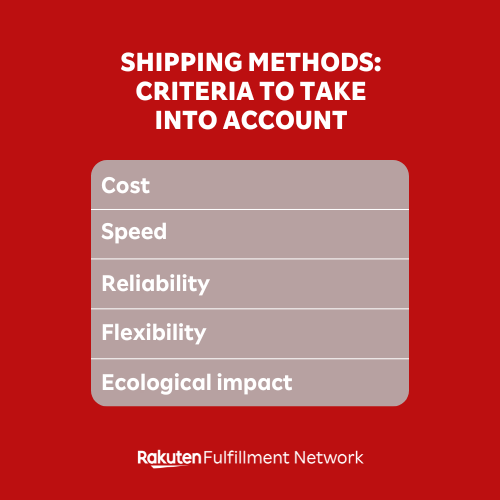
Depending on your business and your clientele, some of these criteria may be more important than others. So it's vital to evaluate them carefully, so you can choose the shipping methods that best suit both your needs and those of your customers.
Our tips for attractive shipping options
Give your customers a choice
Don't settle for just one shipping method! Every consumer has their own habits, and it's important that your sales strategy takes this into account, whatever your sector.
Offer at least one option for express delivery and standard delivery, and at least one option for home delivery and relay point delivery.
Offer different price ranges
As with the shipping options, it's important that this choice is also reflected in the possible prices. An express home delivery will cost more than a standard delivery, while a point relais is generally the most advantageous because it's less costly on the seller's side (as it's a mode that limits carrier travel).
What about free shipping?
Offering free shipping is always a great way to stand out from the crowd and boost your online store's conversion rate. And it's perfectly possible to offer this option without breaking the bank, by opting for free delivery above a certain purchase amount or number of items, or limited to certain destinations such as mainland France. In-store collection is also a simple way of offering free delivery.
We give you all our advice on the subject in this article on free shipping.
Outsourcing your ecommerce logistics: the most efficient way to find your way around?
Whether it's a question of significantly improving inventory management, cutting logistics costs as far as possible, or getting the most out of reverse logistics, outsourcing is a highly advantageous option for many online businesses. Provided you choose the right e-logistics provider..
With Rakuten Fulfillment Network, you can rely on a major player in French ecommerce to support you on a daily basis. Whether you're setting up your online store, warehousing your goods or handling deliveries and customer returns, our turnkey services can be tailored to meet your every need. All at a clear price, with no hidden charges. For more information or to request a quote, click here!
How can you reduce delivery times?
Among the many challenges retailers face in boosting their business, delivery times are one that cannot be ignored. Today, failure to keep delivery times as short as possible increases the risk of losing buyers, who are always on the lookout for an offer that mentions both low delivery costs and rapid dispatch of their parcels.
After explaining in detail the benefits of outsourcing your e-commerce logistics and learning how to choose the right logistics provider, find out how to satisfy your customers by easily reducing your delivery times!
Why is it so important to reduce delivery times?
For better customer service
Delivery times play a critical role in your customers' decision-making. according to a McKinsey study, 35% of online shoppers cancel their purchase if the delivery time quoted is too long.
Similarly, 44% of online shoppers say they don't want to wait more than two days to receive their order (Statista, 2022).
To avoid losing potential customers, your delivery times had better be as short as possible!
Gain in competitiveness
In the 21st century, attractiveness depends on responsiveness. So, among the factors that can win you customers, delivery times are more than ever a major growth lever for a company.
As short as possible delivery times will halve the risk of buyers abandoning their shopping baskets. On the other hand, delivery times in excess of 3 days can be one of the main obstacles to business growth.
In addition to the price of your products on sale, being competitive also involves delivery speed.
To save on your logistics costs
It may seem counter-intuitive, but faster delivery can lower your logistics costs.
The faster your products are delivered, the less time they spend in your warehouses, and the lower your storage costs. You'll also be able to manage your inventory more flexibly, in line with your requirements.
But reducing your lead times is no mean feat. Here are a few tips to help you do just that.
How to reduce your delivery times?
1. Optimize your inventory management
Out-of-stock situations are one of the main causes of delivery delays.
Good inventory management enables you to anticipate potential stock-outs and ensure the continuity of your e-commerce logistics. (Conversely, it also helps you avoid overstocking and increasing your storage costs)
To do this, you first need to define the right storage method. For example, you can use the minimum stock method.
This method consists of replenishing your stocks as soon as the quantity of a product falls below a minimum threshold. This minimum stock must be able to continue to satisfy demand (even in the case of unforeseen events such as a peak in demand) until the stocks are replenished.
However, this method requires you to be able to monitor your stock levels in real time!
2. Anticipate peak periods
Whatever your sector, your demand is bound to depend on peak periods throughout the year.
Whether it's sales, Black Friday or key moments in the year such as the start of the new school year or the beginning of summer, you have order peaks that you need to meet on time.
A poorly-prepared rush period can quickly turn sour if you can't deliver on time!
By anticipating these sales trends, you can adjust your stock levels in line with the various foreseeable sales peaks, and put the necessary resources in place to guarantee adequate customer service.
3. Store your products as close as possible to your customers
The shorter the distance between your stock and your customers, the faster your deliveries will be.
Analyze your orders by city and delivery region to identify the geographical areas where you have the most customers.
You'll then be able to choose the most suitable partner based on its warehouses. By choosing a partner with several warehouses in different geographical locations, you'll benefit from better coverage and therefore faster delivery times.
4. Cut out the middleman
The more different players you have in your supply chain, the greater the risk of delays and longer lead times. By choosing complete intermediaries who take care of your entire logistics chain, you avoid multiplying delays between each stage of the process.
5. Automate order management
By relying on automation technology such as ERP, orders from all your sales channels will be recorded and communicated to your carrier automatically. You'll no longer lose time due to delays in internal communication between the various stakeholders.
6. Outsource delivery to a 4PL provider
A 4PL provider acts as a single intermediary for your logistics. It's the ideal partner for outsourcing all levels of your shipping, storage, delivery and customer returns processes.
For example, if you're a user of Rakuten Fulfillment Network, our e-commerce logistics service, you can outsource your entire supply chain and ensure rapid service to your customers
This enables our customers to offer efficient delivery to their buyers and build loyalty through a smooth experience. If you'd like to find out more, please don't hesitate to request a quote!
What is 4PL logistics? Definition and benefits
Outsourcing part or all of your e-commerce logistics is considered by many specialists to be an excellent strategy when you want to save time and optimize your company's profitability. And in many cases, this outsourcing involves what is known as 4PL logistics.
Find out more about the definition, advantages and implementation of outsourced logistics, which will enable your business to develop under the best possible conditions.
What is 4PL logistics?
A 4PL(Fourth Party Logistics) provider is an intermediary in charge of a company's entire logistics operation. Its aim is to manage and optimize the entire supply chain.
It acts as a single point of contact for its customers' logistics needs, managing all links in the chain (carriers, warehouses, after-sales service, etc.) and all stages (storage, preparation, dispatch, customer returns).
What are the differences between 3PL and 4PL logistics?
During your research, you may also have come across the term 3PL logistics (for Third Party Logistics), which is another type of service provider for outsourcing logistics. And the difference between 3PL and 4PL can sometimes be blurred. Let's take a look at the differences.
Different levels of outsourcing
Whereas a 3PL offers you partial outsourcing of your logistics, focusing on specific tasks, a 4PL offers you complete outsourcing, as its service encompasses the entire supply chain.
Execution versus optimization
A 3PL provider handles the execution of your supply chain, concentrating on day-to-day operational tasks. The advantage of a 4PL is that it's a strategic relationship, aimed at optimizing your logistics. It will know how to make the best providers and decisions according to your needs.
The relationship is therefore different. With a 3PL, the relationship is transactional, driven primarily by storage and delivery costs. With a 4PL, the relationship is partnership-based and long-term, guided by the optimization of your service.
A single point of contact
A 4PL acts as a single point of contact for all your logistics needs, for you and your customers. Acting as an intermediary between the various players involved in your logistics, it will be able to escalate your questions and needs to the right contacts. With a 3PL, you'll have several points of contact to manage, multiplying the back-and-forth on your side.
Available resources
3PLs often have their own fleet of carriers and warehouses. 4PLs don't usually manage any resources directly, but work with a network of partners. This enables them to have an objective view of a particular service provider, and to choose those who are best suited to your business.
What is the role of a 4PL logistics provider?
The role of a 4PL can be categorized into several points:
Managing and optimizing the supply chain
A 4PL coordinates and integrates all supply chain operations, while analyzing and optimizing the chain to improve efficiency, reduce costs and increase customer satisfaction.
Coordinate logistics partners
The 4PL is responsible for selecting and managing relationships with 3PL suppliers, as well as with other suppliers and partners. This includes negotiating contracts with logistics service providers, ensuring compliance and performance.
Providing strategic advice
In addition to operational matters, the Logistics Manager's role is to provide strategic advice to improve logistics operations in line with the company's business objectives. He supports his customers in their development by offering a flexible service, adapting to their growth or changing needs.
Providing state-of-the-art service
The 4PL uses advanced tools to track inventory and shipment data. It uses the analysis of this data to make more informed decisions, anticipate market trends and respond proactively to logistical challenges to avoid problems such as stock-outs.
What are the advantages of outsourcing logistics to a 4PL?
For a company wishing to outsource its warehousing and order dispatch, the 4PL model offers a number of advantages.
Valuable time savings
By connecting you to an entire network of logistics partners, 4PL means you don't have to deal with multiple service providers. This single point of contact enables you to monitor and manage your logistics efficiently. And you can easily refocus on your core business by delegating all those time-consuming tasks.
Lower logistics costs
Reducing your logistics costs by avoiding the need to invest in additional warehouses, equipment and personnel, and by not multiplying the number of external service providers is one of the major advantages of the 4PL, for which cost reduction is one of its objectives.
Greater logistics efficiency
Operators specializing in Fourth Party Logistics have the expertise and experience to optimally manage the storage, transport and distribution of your goods. As a result, your customers are delivered in the best possible conditions.
Flexible service
The high degree of flexibility offered by this operator increases your responsiveness to fluctuations in demand, which can occur, for example, during key shopping season events such as Sales and Black Friday.
How does the 4PL process work?
Let's take a look at how working with a 4PL provider works. Let's take the example of an e-commerce company, a sector for which 4PL is particularly well-suited.
1. Transporting your products
The 4PL coordinates the reception of your products, from the manufacturer or your premises, to one or more warehouses managed by a 3PL company.
2. Product storage
The 4PL manages the storage of your products, and keeps track of its stocks. During this stage, you will generally only be invoiced for the volume of products stored and the length of time they have been in stock, saving you money compared to renting your own warehouse.
3. Order picking
As soon as you receive a new order, whether from your e-commerce site, a marketplace (e.g. Rakuten) or another sales channel, it is transferred to the 4PL, which will pack and prepare it for delivery.
4. Order dispatch
Finally, the order is dispatched, according to the delivery method predefined by you and chosen by your customer (Express, Standard, Registered, etc.). The end customer can also track the delivery status of his order in real time.
5. Customer service and returns
If your customers have a question or a problem relating to delivery, the 4PL will take care of after-sales service for you. Also, if they wish to return a product, this will be handled by the 4PL.
4PL for the retail and e-commerce sector
The majority of e-commerce players turn to 4PL providers for their logistics, as they are unable to internalize this aspect, due to lack of time and resources. To adapt to new consumer habits, retailers are also turning to them to add online sales to their distribution channels.
The 4PL is therefore particularly well-suited to this sector, as it provides the strategic vision needed to manage all the different flows of demand across these different channels. It's a logistics model that adapts to the volatility of online consumers, with particularly high flows during peak periods such as sales and the end of the year, and lower flows during other periods.
When should you use 4PL logistics?
Here again, there are many possible scenarios. We have selected 6 of the most important for you to consider:
- Your company is becoming more attractive , and sales volumes are increasing. Problem: managing the storage of goods and the processing of orders is becoming complicated.
- Supervising logistics operations is by no means your core business, and you want to devote most of your time to developing new customer acquisition strategies.
- Warehousing your own inventory is becoming costly and/or time-consuming.
- Conquering new markets, reaching more consumers nationally and internationally, is one of your priorities. The network of sites provided by the 3PL enables you to do just that.
- For you, reducing delivery costs and times is a priority area for improvement.
- The return of parcels is becoming too complex to handle.
Why choose Rakuten Fulfillment Network for your 4PL logistics?
We're well aware that choosing the right service provider to outsource all or part of your logistics is no easy task. It can even be a source of stress for many entrepreneurs and business leaders.
As a major player in e-commerce for several decades, Rakuten is aware of this problem and has decided to support you with the Rakuten Fulfillment Network, a turnkey solution with no hidden costs that takes charge of your e-logistics and supports it as the market changes.
In a nutshell, Rakuten Fulfillment Network is :
- Save time and money managing your logistics;
- Reduce the time it takes to deliver your orders;
- Control your digital growth;
- An increase in acquisition channels via your own website, our e-commerce platform and all other marketplaces;
- A dedicated account manager to support you in all your endeavors.
Out-of-stock: our tips for avoiding it
Out-of-stock: just three words that can make companies - and their customers - tremble. An out-of-stock condition is the temporary unavailability of a product. This situation is damaging: 7 out of 10 consumers become less loyal when products are out of stock too frequently (source: OpinionWay study, 2024) .
In e-commerce or marketplace, the stakes are high. Inventory management must be an absolute priority, to maintain growth, win new customers and retain old ones. So how do you manage your product stocks and avoid stock-outs? Discover all our advice, as well as a case study at the end of the article. We're off!
I/ A key calculation to know: the out-of-stock rate
An out-of-stock situation is an event suffered by a company. It is neither planned nor deliberate, unlike stock clearance (which corresponds to a deliberate strategy, for example linked to the liquidation of an old collection).
In theevent of an out-of-stock situation, the risks are numerous: customer dissatisfaction, loss of sales, damage to brand image... To avoid repeated out-of-stock situations, here's our advice: know your out-of-stock rate .
The out-of-stock rate is an important KPI in e-commerce, for measuring the efficiency of your logistics. It measures the frequency with which a product is out of stock. The higher the rate, the more frequent your stock-outs... And the more they will impact your growth, while increasing your costs.
The out-of-stock rate is calculated as follows: (number of orders not filled due to out-of-stock situations / total number of orders) x 100
You can also use the following formula:
(Sales shortfall / Total sales) x 100
Your mission: to keep stock-outs as low as possible, and ensure that your product references are always available in the warehouse! Optimizing inventory management is no longer an option... At the risk of facing a number of impacts.

II/ E-commerce stock-outs: the main causes
But why can an e-commerce site run out of products? Here are the main reasons for this phenomenon:
- Transport and logistics difficulties
Transport delays can occur due to logistical problems, weather conditions or customs regulations. These situations affect the supply chain, and the timely arrival of goods. Often, it's just a matter of time: knowing the exact cause helps reassure customers!
- Discrepancies between theoretical and physical inventories
The error is human... Or computerized. It often manifests itself in the form of inventory errors. Discrepancies between the data recorded by the computer and the actual inventory on hand can lead to inaccuracies in the number and availability of products.
To avoid these errors, did you know that Rakuten Fulfillment Network takes care of every stage of your e-commerce logistics? On our marketplace, sellers are supported by our after-sales service, to avoid the unexpected.
- A sudden increase in demand
Stock-outs can be triggered by strong customer demand. This situation is beyond your control: a buzz thanks to an influencer? A special event? When demand rapidly exceeds supply, stock-outs are commonplace.
This was the case for Stan Smiths when they were reissued, for certain Apple products... Or even for packets of pasta during the Covid-19 health crisis!
- Supply chain problems
The supply chain relies on a number of different players and stages. The most frequent failures are production interruptions or shortages of raw materials. Wood, paper, aluminum, rubber... Certain materials are becoming scarce. It's time to innovate, to limit these problems!
- A slowdown in supply processes
Stock replenishment can be affected by abnormally slow order processing. This may be due to inefficient internal processes, or to slowness on the part of suppliers. The result? Product inventories shrink, to the point of running out.
- Incorrect order estimates
Another common cause is poor analysis of sales trends, or miscalculations that distort order forecasts. Incorrect order estimates can also be linked to a lack of internal communication. In this case, product stocks can quickly run out, or be underestimated.
Conversely, an overestimation of stock requirements can always result in a flash sale. It's one of the best ways to clear product stocks in e-commerce!
- Lack of supplier flexibility or reliability
The supply chain involves many players, including suppliers. If the latter are not reactive, or unable to meet your demand, stock-outs occur as a result.
Before calling on a supplier, here are a few key indicators to measure its reliability: the company's financial health, any certifications and industry standards, its online reputation, its value for money..
- Poor just-in-time inventory management
If your company operates on a just-in-time basis, it will prefer to keep stock levels to a minimum, in order to reduce costs. This logistics strategy involves sourcing goods only when they need to be dispatched.
But beware! When demand peaks, and sales seasonality is at its peak, this kind of inventory management can lead to stock-outs. To avoid this, Rakuten Fulfillment Network takes care of your logistics.
III/ E-commerce: what are the impacts of an out-of-stock situation?
Today ,better inventory management is essential to avoid stock-outs. The impacts of stock-outs are numerous. Faced with increasingly intransigent and demanding customers ,lack of availability is considered the second major irritant when purchasing a non-food product, just after lack of price! (Source: Opinionway survey, 2024).
According to the same study, consumers even consider stock-outs to be unacceptable. In the electronics sector, nearly one customer in two (44%) denounces this situation as unacceptable. What are the consequences? Stock-outs undermine customer satisfaction, customer recommendation and loyalty. The company's reputation can also be tarnished by bad customer reviews. This negative impact on brand image can be limited, however, if the unavailable product is listed in another store, according to 7 out of 10 customers.
On the brand side, inventory management problems are detrimental to sales and profitability. It's a drag on growth, but also a major logistical cost. In a hurry and in a hurry, some brands resort to accelerated transport solutions for supplies, to a new supplier, to ordering substitute products... All these emergency solutions have a cost. Or even a surcharge!
Faced with these logistics costs, new solutions are emerging. Like cross-docking. Cross-docking enables supply flows from suppliers and delivery flows to customers to be "crossed" at a single location (called a distribution center). This method makes it possible to combine several goods in a single mode of transport. The result? Savings in time, money and storage problems!
IV/ 5 tips to avoid stock-outs
1- Improve sales forecasts
Rely on the figures: what were last year's sales trends? And what is the life cycle of your products? What are the sales peaks in your market? You can also define your merchandise turnover rate or stock coverage (number of consumption days the company can cope with).
All these short- and medium-term forecasts enable you to optimize the quantity of merchandise you need, so that you always have stock on hand.
2- Optimize inventory management
Poor inventory visibility is often the cause of stock-outs. To avoid this, your inventory of available products must be carried out regularly and meticulously. Various methods exist, such as the perpetual inventory strategy (achievable thanks to inventory control automation software).
For even greater simplicity in controlling and managing your inventory, you can also place your trust in the Rakuten Fulfillment Network. We manage your stock and inventory. And with Rakuten Fulfillment Network, 99.8% of orders placed before 2pm are delivered within 24 hours... without the hassle of stock-outs!
3- Keep a safety stock
If your cash flow allows it, a safety stock is an interesting option: it allows you to take into account the margin of error, and always have availability to respond to unforeseen surges in demand. Without cluttering up your storage space, this limited stock enables you to limit undesirable situations.
As soon as you are forced to "dip into" this safety stock, the alarm is sounded: it's time to restock!
4- Strengthen supplier relations
Reliable, responsive partners are essential to efficient logistics. Before choosing a supplier, evaluate all the potential risks, depending on the supplier's location, the country's economic and political context, transport conditions, the various stakeholders, the supplier's reputation... All these elements need to be taken into account, before choosing the right logistics provider .
Then, as with your customers, focus on building loyalty to maintain a long-term relationship!
5- Diversify sources of supply
Having a plan B is an excellent idea, to limit dependencies and logistical risks. So, have you thought about diversifying your sources of supply for your online store? For each product, identify potential suppliers and start discussions with them.
You know the saying: prevention is better than cure... And in e-commerce, it's better to anticipate than to suffer!
V/ Inventory management: how to adopt a proactive approach?
Despite your best efforts, sometimes it's impossible to avoid running out of available products. Fortunately, this situation is temporary. But how do you deal with it? How do you react? At Rakuten France, here's our recommendation: be proactive! This proactivity translates into :
- Transparent communication with customers: there's no point in hiding out-of-stock situations, or products that are "victims of their own success". Be honest. According to a UPS study, 41% of French consumers return later to see if the product is back in stock.
- Suggest alternatives: to limit frustration, suggest other products in stock and keep customers on your website. according to UPS,17% of loyal customers buy a similar or different product on the website. Even if you can't fully satisfy the initial demand, don't let the buyer leave empty-handed!
- Set upa waiting list: if the consumer really wants to buy an unavailable product, offer to join a waiting list. As soon as new supplies arrive, they'll be alerted first. A good way to win them back.
- Update your marketing campaigns: do you have advertising campaigns underway on Google, or on social networks? Watch out for ads promoting products that are no longer available! Be proactive and attentive to ongoing marketing actions, to limit customer dissatisfaction.

VI/ Technologies and tools: how to equip yourself to manage product inventories?
An IT system is essential for organizing and optimizing your supply chain. Especially if your e-commerce site is expanding! Without tools, it's difficult to control logistics flows and inventory. So, when it comes to equipping yourself, have you considered..
- A warehouse management system (WMS): to monitor and control your stock levels in real time.
- Forecasting and data analysis software : providesyou with information on past sales, as well as detailed forecasts to optimize your inventories.
- An integrated inventory management platform : over 12,000 professional sellers have chosen our Rakuten marketplace to sell their products online. By becoming sellers on our platform, they benefit from a fast, reliable and cost-effective logistics solution, including inventory management.

VII/ Inventory management: the case of Dreame
Let's take the example of Dreame, a Chinese company specializing in high-end household appliances. Its challenge? To adapt its e-commerce logistics to direct-to-consumer (D2C) sales on the French market!
In France, customers are demanding, particularly when it comes to delivery times. 44% of shoppers say they don't want to wait more than two days to receive their order (McKinsey). Whereas for Dreame, delivery times to French customers tend to range from 7 to 10 days... The solution? Adapt the company's e-commerce logistics, thanks to Rakuten Fulfillment Network!
By joining Rakuten Fulfillment Network, Dreame was able to simplify its entire logistics process, considerably reducing delivery times.
Results:
- 5x faster delivery: from 10 to 2 days, from China to France! With Rakuten Fulfillment Network, orders confirmed before 2 p.m. can be dispatched the same day, enabling delivery within 48 hours.
- Sales multiplied by 10 : French customers are won over by more attractive delivery times .
- 200-fold increase in visibility: by selling on our marketplace, Dreame has access to over 13 million connected customers! All the more reason to increase your visibility in the eyes of French buyers.
Would you like to take advantage of a turnkey logistics service to satisfy your customers and avoid stock-outs? Our Rakuten marketplace helps you focus on what you do best: selling. And we'll take care of the rest. Click here to discover Rakuten France:
Logistics Outsourcing: A guide for e-commerce businesses
E-commerce logistics present many challenges: finding the time to deal with them, ensuring quality service and controlling costs. And poor logistics will leave a bitter taste in your customers' mouths. So the question arises: should you outsource your e-commerce logistics?
In this article, we'll outline the advantages of outsourcing your e-commerce logistics, and the steps you need to take to do so in the best possible conditions.
What is e-commerce logistics outsourcing?
Inventory management, order preparation, parcel dispatch, after-sales service in the event of product returns... E-commerce logistics (or fulfillment) encompass numerous factors that merchants need to take into account and master. Retailers can choose to manage these logistics in-house, or outsource them.
E-commerce logistics outsourcing is the process whereby a company entrusts the management of its logistics operations to a specialized service provider.
Companies can outsource some or all stages of their supply chain, such as :
- Warehousing
- Order preparation
- Packing
- Shipping
- Customer returns and after-sales logistics
This practice enables retailers to free themselves from logistical constraints and concentrate on their core business, while ensuring a satisfactory delivery experience for their customers. Outsourcing e-commerce logistics offers many advantages!
The benefits of outsourcing logistics
Focus on your core business
E-logistics involves a number of factors, such as stock replenishment, order preparation and dispatch, and renting a warehouse to store your products for sale.
By outsourcing your e-commerce logistics, you leave this time-consuming management behind, delegating these tasks to an external company that makes it a point of honor to save you time and money.
This frees up precious time, allowing you to concentrate on what you do best: selling.
Finding new levers for growth, developing your offer, negotiating prices for new references, uncovering tomorrow's trends... These are all crucial points for a retailer like an e-merchant, which you can address more often by outsourcing your e-logistics.
Benefit from the expertise of a logistics provider
By working with a logistics provider, you benefit from its expertise, network and tools to improve the efficiency of your logistics and transportation.
For example, a logistics service like Rakuten Fulfillment Network gives you access to tools that provide you with real-time information on the status of your stocks, orders and sales. This means you can easily replenish your stocks to avoid stock-outs.
Optimize your logistics costs
Nearly 12% of retailers are unprofitable due to distribution costs. Yet outsourcing logistics can often be more cost-effective than maintaining an in-house logistics infrastructure.
Logistics providers often benefit from negotiated rates and faster handling by their network of delivery partners. So you benefit from faster, cheaper delivery!
You also reduce your storage costs. A logistics service provider will generally invoice you for the storage space actually used, and not the rented space, even if it's not used in full.
Manage variations in activity
Between sales, Black Friday and the Christmas period, online sales experience many peaks, which can put pressure on retailers when they're managing their own logistics.
It's hard to keep up with an abnormally high flow of orders while maintaining the same quality of customer experience. By outsourcing your logistics to a flexible partner, you can choose to be accompanied during these busy times, to make sure you don't lose any business opportunities.
Removing buying disincentives
35% of online consumers cancel their purchase if the delivery times quoted are too long. Your logistics must not only be efficient, they must also be faster than average.
Delivery times and costs can thus become real differentiating factors, so it's important to take care of them.
Improve the customer experience
For 85% of online shoppers, it only takes one bad delivery experience to dissuade them from ordering from a vendor again. Don't risk losing your hard-earned customers because of logistical errors.
By outsourcing your logistics, you ensure that you deliver the right experience, and you entrust the management of your customers' delivery issues to your service provider.
How to outsource e-commerce logistics easily?
Obviously, there's no question of entrusting your logistics to just anyone! It's important to do your research carefully. Here's our advice to guide you.
Define your needs
First of all, read your logistics requirements.
What aspects of your logistics do you want to outsource? What is your average order volume? Which markets do you deliver to? Is international business important to you? What are your current logistics costs?
Compare service providers
It's important to evaluate your logistics provider on several criteria. These may include :
- Delivery times: Make sure the provider can meet the delivery times you promise your customers. For example, with Rakuten Fulfillment Network, 99.8% of orders placed before 2pm are delivered within 24 hours.
- Storage capacity: Evaluate the provider's storage capacity in relation to your current and future needs. Make sure they can handle your growing inventory.
- After-sales service: Does the service provider offer an after-sales service to deal with any logistics problems encountered by your customers? Such a service can free you from a time-consuming aspect of logistics.
- Flexibility: Look for services capable of adapting to your changing needs. They need to be able to handle peaks in demand during busy periods.
- Integration with your e-commerce platform: Make sure the service provider can easily integrate with your online sales system and/or your various marketplaces for smooth communication of orders.
- Costs and pricing structure: Compare the rates and charges of different logistics providers. Make sure you understand the pricing structure, including hidden costs (if any), such as inactive storage charges or return fees. For example, with Rakuten Fulfillment Network you benefit from a simple pricing structure with no hidden costs.
Keep track of your logistics
Once you've selected your service provider and started working together, you can set up routines to monitor your inventory, order and delivery performance, and see the impact your service provider is having on your performance and efficiency.
Why choose Rakuten Fulfillment Network to outsource your e-commerce logistics?
Calling on a major e-commerce player like Rakuten to help you manage your e-logistics means :
- Save time. By delegating the management of your logistics, you can refocus on what's most important: growing your business.
- Rely on e-commerce experts. With Rakuten Fulfillment Network, Rakuten is the first player in Europe to federate an international network of fulfillment experts whose know-how is recognized by their peers.
- Reduce the delivery time of your orders. With Rakuten, every order you place is processed immediately. Shipping is fast, delivery express.
- Save on storage and shipping costs. Our prices are clear and there are no unpleasant surprises. Our partners' prices are also negotiated to reduce your costs as much as possible.
- Increase your inventory. Outsourcing your e-commerce logistics means delegating stock management to a third-party company, enabling you to rapidly increase the volume of your references.
- Boost your sales volume. In line with the previous argument, increasing your inventory will have an impact on your sales volume over the months.
- Control your digital growth. Number of products, stocks, prices... With just a few clicks, make the necessary updates to increase your yield.
- Multiply your acquisition channels. Opting for the Rakuten Fulfillment Network means being able to sell from your own merchant site, your store created on Rakuten and all the other marketplaces that interest you.
- Rely on e-commerce experts. When you call on Rakuten to manage your e-commerce logistics, you're surrounded by dedicated experts, such as an account manager who can provide you with ongoing support, advice and assistance.
Logistics service provider: definition, advantages and selection criteria
To save time and money, outsourcing logistics has become a real asset for many companies, particularly in the ecommerce sector. Provided you choose the logistics service provider that best suits your needs. What are the different types of logistics provider? And above all, how do you choose the right one?
What is a logistics service provider?
A logistics service provider (LSP) is a company that specializes in supply chain management services for your business. They can handle part or all of your logistics, depending on your needs.
The main objective of a logistics service provider is to optimize your logistics operations by providing its expertise, tools and partner networks, so that you can concentrate on your core business and improve the efficiency of your logistics (and therefore the satisfaction of your end customers).
Their role can impact different stages of the supply chain:
- Warehousing and inventory management: the logistics provider generally takes charge of receiving your stock and storing it in its dedicated areas. This warehousing comes with real-time inventory tracking, enabling you to analyze the status of your stock at any time and return goods accordingly, to avoid stock-outs.
- Packaging and order preparation: the logistics department can also help you prepare shipments. This means providing the right packaging, preparing each product for shipment, including order tracking.
- Dispatch and transport : We send parcels, with fast turnaround times and order tracking, taking into account any fuel surcharges.
- Returns management and customer service: When a customer has a delivery-related request, your service provider can help, freeing up valuable time for you. Similarly, if a customer wishes to return a product for an exchange or refund, this can be handled by your service provider, who will receive and process the return.
- Tracking orders: LSPs manage and fulfill every new orders, from packaging to transportation, through an integration with your enterprise resource planning system.
Additional services can also be added, such as insurance for lost or damaged parcels, or re-shelving of customer returns.
The different types of logistics service provider
Logistics providers are divided into five categories, each offering a different degree of service and integration.
1PL (First Party Logistics)
1PL providers are transport agencies that send your goods from point A to point B. This delivery service is the first form of logistics outsourcing.
2PL (Second Party Logistics)
A 2PL provider offers an additional level of service, managing both transport and product storage.
3PL (Third Party Logistics)
3PL providers offer a much more comprehensive level of service, including order preparation in addition to transport and storage. They can also provide more advanced services such as product returns management and after-sales logistics.
4PL (Fourth Party Logistics)
A 4PL provider acts as a system integrator, managing a company’s entire supply chain. It acts as a strategic partner, aiming to optimize every stage of the supply chain. Whereas a 3PL provider manages the execution of logistics tasks, a 4PL provider involves a more strategic, long-term relationship. In fact, 4PLs generally subcontract the technical side to several 3PL providers, so that they can concentrate on strategy.
5PL (Fifth Party Logistics)
A 5PL provider aims to optimize a company’s logistics like a 4PL, but on a larger scale, using technology and data to create integrated, efficient supply chain networks. In particular, they aim to automate flows by taking huge amounts of data into account, such as trend forecasts, and manage the entire supply chain of their customers, usually multinationals or companies in the industrial sector.
The most common logistics service providers are generally 3PLs and 4PLs, as they allow logistics outsourcing to be set up quickly while remaining accessible to all company sizes.

And what about freight forwarders?
A freight forwarder acts as an intermediary between shippers and transportation services like air freight, sea freight, road, or rail. The role of a freight forwarder is to arrange the transportation of goods from one destination to another efficiently and cost-effectively. Their main difference with an LSP is that their service is limited to transportation, whereas an LSP adds other additional services such as customer service, parcel returns and storage.
The advantages of using a logistics service provider
Improved customer experience
Too long delivery times, charges too high, parcels never received or in poor condition... The delivery stage can cause numerous problems that can damage your customers' experience. There's a risk that you'll lose your customer for good. Worse, they can complain about it to others, giving you a bad reputation. Indeed, up to 30% or more of customers may leave a negative review or complain online after a bad delivery experience.
It's therefore vital to offer satisfactory delivery solutions to avoid seeing your image deteriorate. And competitive delivery can even become a lever for differentiation, by offering fast turnaround times and efficient tracking!
Reduce your logistics costs
Contrary to what you might think, outsourcing your logistics often means making savings in this area!
In fact, it reduces your investment needs: you avoid buying or leasing your own storage space and transport vehicles. Logistics service providers also have their own network of partners from whom they benefit from preferential rates, which you as a customer can take advantage of.
Greater flexibility
Throughout the year, your logistics needs evolve: sales, high and low seasons, Black Friday... And from year to year, your needs are bound to grow (or so we hope!) A service provider will be able to adapt and support you as your business and logistics needs evolve, allowing you to scale up or down depending on the period.
Benefit from their advanced technology
LSPs are in the logistics business for a long time and they often use advanced technology and software to the benefit of the businesses they work with. Their solutions enable you to monitor data on your stock levels in real time, as well as the progress of your orders and deliveries, helping you to optimize your logistics, improve your operations and processes and reduce cost.
Save considerable time
When you're just starting out, you can still manage your own order dispatch. But once you've reached a certain level of activity, it becomes more and more time-consuming. Not to mention the questions and returns from your customers to deal with, and your right to go on vacation without wondering who will be sending out the orders!
Outsourcing your logistics means you can focus on your core business: product development, marketing and sales, while ensuring that the logistics aspect is handled by experts in the field.
The advantages of using a logistics service provider for your customers
Outsourcing your logistics also helps you offer your customers a better experience. Here are just a few of the benefits for them:
Better order tracking
Parcel tracking is an important component of the delivery experience, and one that many buyers expect. A client appreciate being able to track the progress of their delivery. This service is generally provided by LSPs, reassuring your customers.
Better management of customer returns
Returns for refunds or exchanges are increasingly common in e-commerce, and present a new challenge for sellers. An LSP can help you manage these reverse logistics to maintain high customer satisfaction while remaining profitable on the business side.
Quality after-sales service
In the event of delivery problems or questions, your customers can turn to your service providers, who deploy a dedicated team to answer them. Their response time will certainly be faster than if you handled it yourself, and your customers will be all the happier for it.
Faster and more affordable delivery
On top of it, the savings you make on your billing with an LSP will enable you to offer more affordable and therefore more attractive delivery services, while at the same time providing a more efficient and therefore faster service.
Self-shipping vs. working with a logistic service provider
Although shipping your own orders is convenient and easy at the start of your e-commerce adventure, this task can quickly become time-consuming and a source of expenditure that's hard to control.
Indeed, managing your own logistics means internalizing the costs of storage, transport, insurance and truck fuel. Over and above the costs, it's also a considerable investment in terms of time. Processing new orders, packing your products, shipping your parcels... all these tasks take time away from your core business.
By working with a logistics provider, you benefit from reduced costs thanks to its network of partners, and you free up precious time!
How to choose the right logistics provider?
Before calling on a partner for your e-logistics, it's important to determine your needs carefully.
Stock management and merchandise storage, order preparation, parcel dispatch, customer service in the event of product returns... Drawing up precise specifications for the tasks you wish to entrust to a third-party company is a good way to get a clearer picture. And to find the logistics service provider who can meet all your needs.
Let's take a look at the different criteria to explore.
Services offered
We're here to assess whether the level of service offered by the service provider is up to scratch your expectations and those of your customers.
- Shipping methods : what are your customers' preferences? Your logistics service provider may offer a range of services, such as express delivery or shipment in point relais. The more shipping options he offers, the more convenient it will be for your customers.
- Delivery times: Make sure the service provider can meet the delivery times you promise your customers. For example, with Rakuten Fulfillment Network, 99.8% of orders placed before 2pm are delivered within 24 hours.
- Shipment traceability: Make sure that the service provider offers real-time tracking tools so that you can monitor the status of your stocks and orders, and so that your customers can track the shipment of their products.
This may also include other criteria such as international delivery capabilities and insurance in case of damaged or lost packages.
You also need to think about any criteria related to the practicality of storing your products. These may include :
- Storage capacity: Evaluate the provider's storage capacity in relation to your current and future needs. Make sure they can handle your growing inventory.
- Warehouse locations: The logistics provider's geographical proximity to your customers can influence shipping costs and delivery times. A central warehouse location can be advantageous for reaching a large number of customers quickly.
- Inventory management: Make sure the logistics provider is able to monitor your stock levels in real time, and notify you when they are close to zero, to avoid stock-outs.
Buyer experience
What care is taken to ensure your customers' experience when using this service provider?
- After-sales service: Does the service provider offer an after-sales service to deal with any logistical problems encountered by your customers? Such a service frees you from a time-consuming aspect of logistics.
- Customer returns management: Understand how the service provider handles product returns and exchanges. For example, Rakuten Fulfillment Network facilitates the management of your customer returns, including tracking and receipt of returns, product inspection and restocking.
Seller experience
Finally, will this service be convenient to use on your end? Here are a few criteria to help you decide.
- Customer service: The quality of customer service is crucial. Make sure the provider is responsive, can resolve your problems quickly and offers good customer support.
- Scalability: Look for a provider who can adapt to your changing needs. They must be able to handle peaks in demand during busy periods.
- Integration with your ecommerce platform: Make sure the service provider can easily integrate with your online sales system and/or your various marketplaces for smooth communication of orders.
- Minimum volume: If you're just starting out in e-commerce, check that the service provider accepts order volumes your company's size.
- Experience in the ecommerce sector: Make sure the logistics provider has experience in dealing with the specific specific needs of e-commerce companies. They should understand the speed, flexibility and handling of seasonal peaks.
- Costs and pricing structure : Compare the rates and charges of different LSPs. Make sure you understand the billing structure, including hidden costs (if any), such as inactive storage charges or return fees. For example, with Rakuten Fulfillment Network you benefit from a simple pricing structure with no hidden costs.
Choosing the right logistics provider is crucial to the success of a company's supply chain. Between full-service, specialized, integrated or technology-based providers, each type offers specific benefits tailored to different business needs and objectives. Taking the time to choose the right partner, who understands your objectives and is committed to achieving them, is an investment that can significantly improve your company's efficiency, responsiveness and competitiveness.
How to improve your e-commerce supply chain?
E-commerce has never been in better health: in 2023 alone, sales in the sector will total 159.9 billion euros. That's +10.5% on 2022 (Source: Fevad, 2023).
But while everything seems to be on track, there are others indicators that raise questions. With this rapid growth, how can you successfully manage the surge in product output, transportation, and final delivery to customers?
This is the challenge facing the supply chain, which must now reinvent itself. In this article, discover the definition, challenges and strategies for optimizing the supply chain, for all the e-tailers of today... and tomorrow.
What is the supply chain?
Supply chain: a simple definition
The supply chain covers all stages from the purchase of raw materials, through product production and transport, to final delivery to the customer.
This strategy is of the utmost importance: by controlling and optimizing each stage, an e-tailer can ensure optimal production, sale and delivery. Supply chain management has a direct impact on customer satisfaction. But that's not all! It also helps to improve the company's profitability, to gain market share through strong differentiation... And to aim for better, more sustainable growth.
But before they can achieve these benefits, e-tailers face a challenge: the supply chain must weave a complete network around a product, integrating different players who feed into each link. Throughout this process, there are various flows. Let's talk about them.
Supply chain flows
Supply chain management is divided into 4 flows:
- The physical flow: this corresponds to the logistics chain, encompassing the supply, transport and storage of goods. This flow refers to the movement of products within the company. Good management of physical flows means getting the right products to the right place, at the right time, in the right quantities... and, above all, in the right condition.
- Information flow: this is the data (or Big Data) that drives the physical flow. All the information concerned relates to sales history, strategies and resources deployed by the company, performance indicators, etc. All this information responds to the what (processes), the where (country, warehouse, IT system), the how (resources and conditions) and the when (product life cycle).
- Financial flows: these are all transactions carried out both externally (with partners, suppliers or subcontractors) and internally, within the company. These flows may be denominated in several currencies.
- Administrative flow: this concerns all documents circulating between the parties involved in the supply chain. These include documents linked to the processing and control of orders or payments, management reports, etc., as well as all administrative documents which may have an impact on inventory management, cash flow or product marketing.
All these flows are called “real and digital” and are associated with movements of goods, services, documents or financial data. Both internally and externally. The objective is to ensure good coordination and management of all these flows, to ensure the logistical success of the company.
The actors of the supply chain
As we have seen, the supply chain consists of a set of links. To optimize each of its links, dozens of actors are mobilized and collaborate together, through the different flows.
Producers, suppliers, charterers, logisticians, transporters, etc. All these players are essential to ensure the supply chain… Until the end customer!
The various players in Supply Chain Management are mainly grouped into 4 categories:
- The actors of manufacturing and production
- Stakeholders in storage and inventory management
- Transport players
- Internal actors (accounting, HR, marketing, etc.)
In a market increasingly concerned with the environment, all these actors have a major challenge: reconcile impeccable e-commerce logistics, and economic, environmental and social commitment. Let’s talk about it!
The Challenges of the Supply Chain
All distribution companies, including e-commerce sites, are facing new supply chain challenges. These challenges include:
Integrate sustainability and social responsibility throughout the process
Faced with the current climate, economic and social challenges, many companies are rethinking their supply chain. The solutions envisaged? Choose ethical suppliers (who meet CSR standards), use sustainable materials, optimize transportation to reduce greenhouse gas emissions… Or identify waste management processes.
By promoting the circular economy, environmental sustainability or a more social logistics approach, companies enjoy many benefits. Both in terms of brand image and the acquisition of new responsible customers. In addition, an optimized supply chain can help reduce costs over time… Another important challenge for businesses!
Coping with rising logistics costs
Since the Covid-19 crisis, companies' supply chains worldwide have been heavily impacted. Since the recovery in “demand” on the customer side and the reopening of borders, improvements are notable… But some challenges remain. Especially in the context of inflation and economic crisis. The increase in logistics costs is particularly pointed out.
Let us take the example of transportation costs. Shipping is estimated to have increased by 547% from the seasonal average of the past 5 years, for a container travelling from Shanghai to Rotterdam! (Source: China Ministry of Transport, 2021).
Tackling the Logistics Labour Shortage
In recent years, many companies have been “out of reach”. Suppliers, transporters, deliverers, etc. The supply chain is slowing down. Companies experiencing this labour shortage are also taking the risk of disappointing their customers, with more expensive products and slower delivery.
To meet today’s supply chain challenges, finding the right partners is a strength. So, if you are still looking for yours, for your online store... Rakuten is at your side! We offer our marketplace sellers fast, reliable and economical e-commerce logistics. To let them focus on what they do best: sell.
Rakuten Fulfillment Network allows you to reduce your logistics costs. You get a flat rate regardless of the sales channel. And we take charge of every step of your e-commerce logistics: packing orders, customer returns, storage of your products…
Your customers are satisfied, your schedule is relieved. Our customers save 25% on average on their logistics costs!
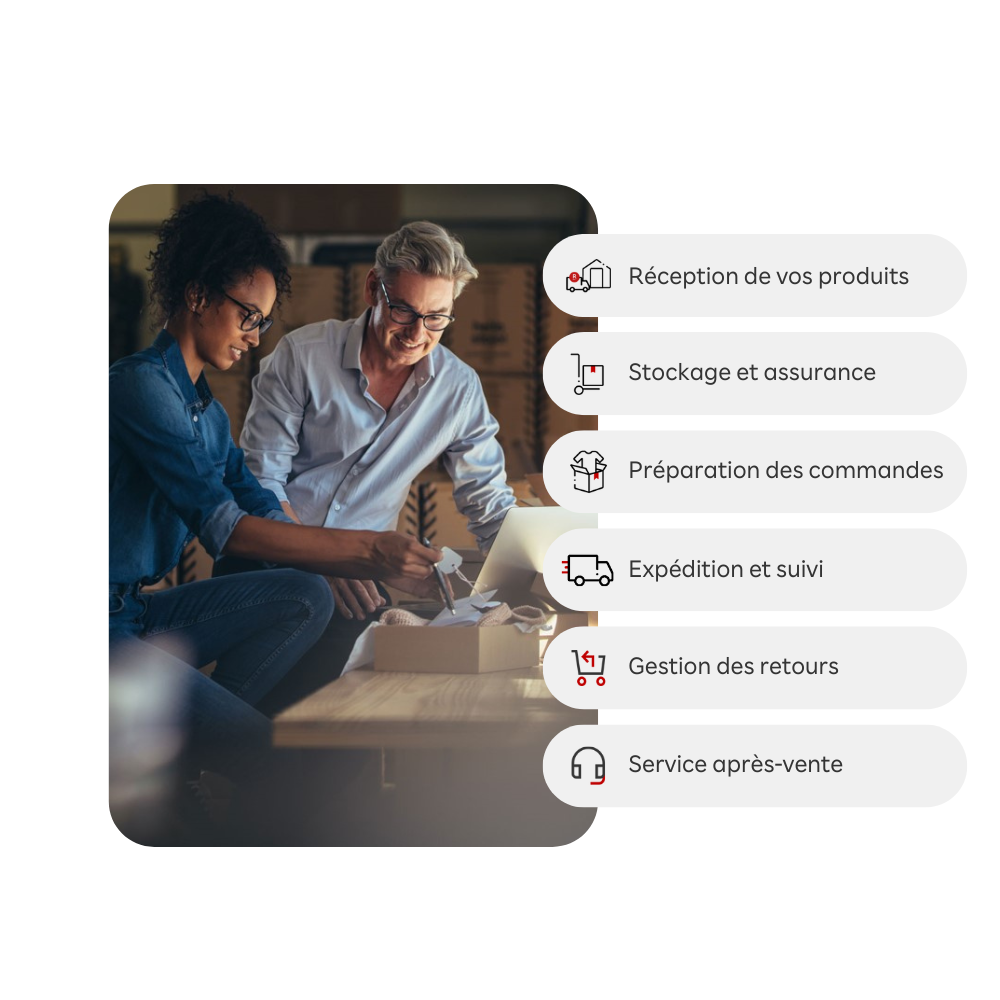 Discover Rakuten Fulfillment Network
Discover Rakuten Fulfillment Network
How to optimize your supply chain? 5 winning strategies
1- Align logistics strategy with business strategy
The starting point for an optimized process? A well-defined strategy from the outset. Always begin with the company's overall objectives to determine the direction you need to take. Once established, your logistics strategy should align with your commercial strategy. So, what are your products? How do you plan to market them? Through which channels and to which target customers?
Answering these questions will help you create a coherent supply chain that matches your business reality.
For example, if you plan to sell products made in France, produced in very limited quantities by your production chain... Consider a pre-order system through your online store, available for a limited time. This approach allows you to anticipate every link in the chain, from creation to final delivery to the customer.
2- Choosing the right technologies
Without the right tools, how can you get good visibility on all your flows? Today, technology is indispensable and inseparable from a good logistics strategy. So, to optimize your supply chain, make sure you use the right tools.
Among these tools, a Warehouse Management System (WMS) allows you to optimize logistics flows, manage your inventory and successfully monitor all your processes. Then, for transport management, a Transport Management System (TMS) is particularly useful. It automates and optimizes this part of the supply chain, in order to promote transport conditions.
Finally, whatever the solutions chosen, here is our advice: favor a centralized computer space, to avoid multiplying spreadsheets and chains of emails sent to logisticians. This is what we offer to sellers in our marketplace, with Rakuten Fulfillment Network, to manage all their logistics in a few clicks!
3- Listen to customer needs
If the last stage of the supply chain concerns the delivery of an order to the end customer… This end customer should not be your last priority! Whether you are an e-commerce or marketplace seller, placing the customer at the center of your business is crucial. Always listen to their feedback to optimize your entire logistics process.
For example, are your customers satisfied with the delivery time? And its conditions? Their feedback is invaluable, to improve the customer experience… And the different links in the supply chain. It is also considered that 98% of online customers remain loyal to an e-commerce site after a positive delivery experience (source: IFOP study, 2021). To preserve this loyalty, stay tuned for feedback from all your customers.
4- Demonstrate adaptability and responsiveness
In addition to listening to customers, listening to the market is essential to improve its SCM (supply chain management) strategy. What is the current situation? How are your partners evolving? And what strategies are your competitors adopting? To optimize its continuous supply chain, market monitoring must also be continuous.
In addition, certain qualities are required: adaptability, flexibility, responsiveness… Indeed, unforeseen events are frequent and can delay the flow of goods. Your supply chain must be able to adapt in all circumstances. Either by anticipating potential production and delivery delays, or by having a plan B available.
5- Monitoring performance indicators (KPIs)
Finally, to optimize the supply chain from end to end, here is our last tip: follow the most important key performance indicators (KPIs). Measuring these KPIs will allow you to measure the effectiveness of your logistics, and identify the main points of friction. As well as what works best.
Among the key performance indicators to measure for your e-commerce site are the following:
- The turnover rate of merchandise stocks
- The ratio forecast to actual sales
- The time of replenishment
- The percentage of complete orders
- The rate of return of products
- The cost per unit delivered
- “On Time Delivery” (OTD)
To help our marketplace sellers track all this data, we provide them with a centralized dashboard. The Merchant Dashboard is a complete tool for managing sales and ads, as well as tracking your performance on Rakuten.
Regular monitoring of this dashboard makes it possible to improve the e-shop’s performance… But also its supply chain. To aim for more growth, more sustainably.
What legal status should you choose for your e-commerce business?
This article is about the French market and French Jewish laws. They are not applicable in other countries.
More than ever, e-commerce is seductive. The sector's figures are promising: in 2023, e-commerce sites recorded over 573 million transactions, representing annual growth of 5.2% (source: Fevad, 2023). To achieve the same success, many sellers are starting to create an online sales site... And all are concerned by a crucial choice. The choice of legal status.
Without a legal status, it's impossible to operate legally. So which status should you choose? Micro-entreprise, EIRL, EURL, SASU, SARL, SAS... The choices are numerous. And the final decision influences not only the day-to-day running of the business, but also its long-term growth. Want to know more? Follow the guide!
Micro-entreprise, SASU, SAS... What are the legal forms?
To open your own online store and become an e-commerce vendor, there are a number of different schemes available to you. In particular :
- Micro-enterprise (formerly known as auto-entrepreneur status)
- Sole proprietorship (EI, formerly known as EIRL)
- Single-member companies (SASU or EURL)
- Multi-partner companies (SARL or SAS).
Each legal status has its advantages and disadvantages. Let's talk about them.
Micro-business
Micro-enterprise is probably the simplest (and least expensive) legal status for testing an online business. But be careful! The sales threshold is limited, as is the credibility of this system in the eyes of your partners or potential customers.
To sum up :
| Micro-business | |
| Benefits | Disadvantages |
|
|
Sole proprietorship (EI)
Even though the sole proprietorship has no legal personality, it is a "real" business, unlike the previous status. The classic IE makes up for some of the shortcomings of the micro-enterprise, as it allows you to increase the sales ceiling, deduct all expenses, improve your credibility...
But since 2022, business assets have been redefined under this status, merging with personal assets. This means you are less protected if you stop working! There are other criteria to take into account:
| Sole proprietorship | |
| Benefits | Disadvantages |
|
|
Single-member companies (EURL and SASU)
To launch an e-retail business, many entrepreneurs turn to setting up a company. With a one-person company, assets are better protected, the transfer of shares is simpler and credibility is even greater with these statutes. A distinction is made between the EURL and the SASU. The EURL is a single-partner SARL, as is the SASU for the SAS.
However, with this type of legal structure, formalities and costs are more complex: drafting of bylaws, advanced accounting, publication of a legal incorporation announcement in a newspaper... Here are details of the advantages and disadvantages of these two single-member statutes:
| EURL and SASU | |
| Benefits | Disadvantages |
|
|
Multi-partner company: SAS
The SAS (Société par actions simplifiée - simplified joint-stock company) is a flexible and interesting legal status, particularly for launching an online sales company with several associates. This status offers great freedom of action. What's more, you no longer need to appoint a statutory auditor or set a minimum share capital.
This legal model allows you to grow while bringing in investors and protecting your assets. However, financial costs are high, and administrative management is rigorous.
| SAS | |
| Benefits | Disadvantages |
|
|
Multi-partner company: SARL
44% of e-traders choose the SARL status (source: e-Komerco study, based on over 5,000 companies). This is by far the most popular form of business for online store creators! It is particularly suitable for projects launched by several partners.
Each person's liability is limited to his or her business assets. But beware of the TNS (Travailleur Non Salarié) status, which is very rigid, with heavy social charges. Administrative formalities are also considerable. Here's an overview of the advantages and disadvantages:
| SARL | |
| Benefits | Disadvantages |
|
|
So, are you ready to make your choice? When you create your e-shop on Rakuten France, you'll need to choose the status of your choice. This is essential for registering and selling your products on our marketplace. Recently, the SDE (Société de Droit Étranger) status is also available, in the "Status Selection" section. Click here to find out more and become a seller:
How much does it cost to set up an e-commerce business?
Is your e-commerce site project coming to fruition? Congratulations! Whether you choose to open your own website or join a marketplace like Rakuten, there are a few steps you need to take before you can launch. Like defining your business plan, including your projected budget.
Indeed, the costs of setting up a business are mainly linked to the creation of the website, external purchases, logistics... The price of an e-commerce site ranges from 900 to 10,000 euros, depending on the scale of your project. The purchase of a domain name ranges from 10 to 50 euros per year. Other costs may be added, depending on your decisions, but don't forget the last one: the cost of legal status.
On average, setting up a SAS, SASU, SARL or EURL costs between 220 and 300 euros (including compulsory legal advertising and registration with the Registrar). Add at least 500 euros if you use the services of an accountant or chartered accountant.
With micro-enterprises, you don't have to pay any fees in advance. The cost of creating the status is free.
What are the registration stages?
For micro-businesses :
- Choice of status: Check that your activity is eligible for the auto-entrepreneur scheme.
- Declaration of commencement of activity :
- This declaration is made online on the official URSSAF website, for commercial and craft activities, or on the Chamber of Commerce and Industry (CCI) website for commercial activities, and on the Chamber of Trades and Crafts (CMA) website for craft activities.
- For liberal professions, you need to register on the URSSAF website or the auto-entrepreneurs portal.
- Registration :
- Registration with the Registre du Commerce et des Sociétés (RCS) for traders, or with the Répertoire des Métiers (RM) for craftsmen, is automatic and free of charge.
- Self-employed professionals are registered with URSSAF.
- Obtaining a SIRET number: A SIRET number is assigned to you after registration, and is essential for starting your business. After that, you can set up your online store... and sell your first products!
For SARL, SAS, EURL, SASU :
- Drafting by-laws
- SARL/EURL : These bylaws must define the company's organizational rules, the partners' contributions, the distribution of profits, and decision-making procedures.
- SAS/SASU: These bylaws offer greater freedom in terms of organization and operation. However, it's best to draw up the articles of association with the help of a professional!
- Filing of share capital
- The capital must be deposited in a blocked account opened in the company's name with a notary, a bank or the Caisse des Dépôts et Consignations.
- Publication of a notice of incorporation
- A legal announcement of the company's incorporation must be published in a legal gazette in the département where the registered office is located.
- Registration of articles of association
- The signed articles of association and associated deeds must be registered with the Service des Impôts des Entreprises (SIE), if contributions in kind are made or if registration duties are due.
- Obtaining the necessary supporting documents
- Proof of registered office, non-conviction of the manager or chairman, and registration with the Registre du Commerce et des Sociétés (RCS).
- Declaration of beneficial owners
- Individuals holding more than 25% of the capital or voting rights are required to file a declaration with the Clerk of the Commercial Court.
- Registration with the Trade and Companies Registry (RCS)
- The registration file, including articles of association, supporting documents and completed forms (M0 for a SARL/EURL, M0' for a SAS/SASU), must be submitted to the Centre de Formalités des Entreprises (CFE) or directly to the commercial court clerk's office.
- Obtaining a Kbis certificate
- This official document attesting to the legal existence of the company is issued by the commercial court clerk's office after registration. Then you're free to do business and sell your products online!
Examples of company types by legal status
Would you like to set up a company, but don't know which status to choose? Here are a few examples to help you decide:
Micro-entreprise (auto-entrepreneur scheme)
- Example: A professional photographer operating alone, a jewelry sales website, an e-commerce site for handmade candles... This status is ideal for sole traders who want to simplify their administrative and tax procedures as much as possible, while keeping sales within the limits of the scheme.
SARL (limited liability company)
- Example: A local bakery run by several partners. This type of company is ideal for small and medium-sized businesses that wish to benefit from liability limited to their contributions.
SAS (simplified joint-stock company)
- Example: An innovative technology start-up, such as a SaaS solution. The organizational flexibility of this status allows a free distribution of powers between shareholders.
EURL (Entreprise Unipersonnelle à Responsabilité Limitée)
- Example: A self-employed consultant. The EURL is the single-person version of the SARL, perfect for the sole trader wishing to limit personal liability.
SASU (Société par Actions Simplifiée Unipersonnelle - one-person simplified joint-stock company)
- Example: A freelance software developer. The SASU offers a one-person structure with all the advantages of the SAS, such as freedom of management and liability limited to the amount of the contribution.
Ready to create your online store?
Does the adventure of e-commerce appeal to you? You're not alone. On our Rakuten marketplace, more than 12,000 professional sellers have created their own e-shops to sell products online. The results? Our 13 million loyal buyers put their trust in them, in complete simplicity and security, on a single digital marketplace.
Would you like to launch your own e-shop? You now have all the keys you need to choose your legal status, then take the necessary administrative steps. Then join Rakuten France, to boost your sales right from the start:
Boosting e-commerce sales with promo codes: the guide
It's an essential tool for generating traffic, increasing sales and boosting growth: the promotional code. Also known as e-coupon, promotional code, discount code... This lever is a magnet for customers. It's even considered that 80% of consumers are more inclined to buy a new brand if they have access to a coupon or promo code (source: RetailMeNote annual report, 2021).
But is it really worth it for brands? Should they bank on this lever? And if so, how do you set up a coupon code on your e-commerce site? Find out all the answers from Rakuten, in this guide.
What is a promo code? Definition
Saving money is a priority for shoppers, especially in times of crisis or inflation. And to achieve this, customers rely on one tool: the promotional code (or promo code). This is an alphanumeric code communicated to potential customers, so that they can benefit from a discount when purchasing a product. The code is entered just before payment. A discount is then deducted from the customer's basket, and the final price of the products is reduced.
For customers, the coupon is an incentive to buy. For marketplace and e-commerce sellers, it's a sales driver. Today, 90% of consumers admit to actively using promotional codes. And its power is such that 46% of consumers abandon their online shopping baskets if a promotional code doesn't work.
To satisfy their customers, brands therefore have every interest in regularly proposing offers and promotions of this type... While ensuring the reliability of the codes proposed, to limit purchasing friction and basket abandonment.
The advantages of e-commerce promo codes
Have you launched your online sales site? Congratulations! Now you're looking to attract, convert and retain more customers? Here's a solution: deploy your promo code strategy. There are many advantages to these discounts, such as...
- Quick and easy to use: you don't need a 5-year degree in IT to create a promotional code for your e-commerce site. In just a few clicks, you can generate your promotional codes, and distribute them across your various channels (social networks, newsletter, website homepage, etc.).
- Greater visibility: promo codes are useful for promoting your brand, raising awareness of your products and developing your reputation. Especially in the competitive world of e-commerce. So think about specific coupon codes at different times of the year!
- More customers, more growth: discounts are a real acquisition lever. Ideal for attracting new buyers, seduced by a personalized, momentary offer. This type of marketing and sales action increases your market share, sales and company growth.
- Boost purchases: consumers are keen on bargains, promotions and discounts. By offering them a discount code, you can encourage them to complete their purchases, and even increase their average basket.
- Increased loyalty: a small promo code, for big long-term impact. That's the mission of this lever. By using them, you strengthen customer loyalty, which will keep them coming back to your e-commerce site. Especially if the experience is personalized!
Request contact Rakuten Coupons
How do I set up promo codes?
Before setting up a promotional offer, it's important to choose the right form. There are many different types of promotional code. The best-known are :
- Single-use promo code: can only be used by a single customer, once, before a deadline set by the brand. This type of coupon code is frequently used to build loyalty among existing customers, in a personalized way.
- The multiple-use coupon code: this type of discount is valid for all Internet users, whether or not they are existing customers. Distributed omnichannel, it is mainly used to attract new buyers, to boost brand growth.
- Limited-time flash code: this type of code, open to all, is often used during a flash sale. It can be deployed only on certain products (to clear stock or, on the contrary, to facilitate a product launch) or on the entire catalog.
- Fixed discount codes: these differ from percentage discount codes. In practice, these codes offer the same discount on the final price... but they are presented differently to buyers. It's up to you to choose the most convincing marketing argument!
- The free delivery code: as we all know, free delivery is an essential selling point. According to a Sendcloud study (2023), the presence of shipping costs is even a reason for cart abandonment for 62% of e-buyers. For reasons of profitability, it's not always possible to offer free shipping all year round... So, have you thought about a momentary offer?
Promotional codes may take different forms, but their purpose remains the same: to create a sense of urgency and privilege among buyers, inviting them to buy. And in so doing, increase your online store's sales.
And if you're a Rakuten seller (or want to become one), creating a coupon is easy, so you can reap the rewards faster. We offer Rakuten Coupons, a type of discount coupon valid only on your ads. These personalized coupons give you instant visibility on our platform... and more customers, among our 13 million loyal buyers.
Find out more about Rakuten coupons
Promo code: FAQ
How to make money with coupon codes?
And above all, is it a profitable strategy? Unsurprisingly, it's an expensive investment. Offering a discount to a customer is never free. So, before setting up such an operation on your online store, you need to measure its rate of return.
Here's how to estimate the rate of return:
Profitability = (Income Generated by Coupons - Cost of Goods Sold - Total Cost of Transaction)
Let's take the example of an online store:
- Discount offered: €10 per coupon.
- Number of coupons distributed: 1,000.
- Estimated rate of coupon use: 10% (100 uses).
- Average production cost per item sold: €30.
- Average selling price per item: €60.
- Cost of distributing offers: €500 (e-mails, online advertising, social network posts, SEO, etc.).
Total cost of operation: Cost of coupons used + Cost of distribution =
(100 * 10 €) + 500 € = 1500 €.
- Coupon revenue: (Average selling price - Discount per coupon) * Number of coupons used = (€60 - €10) * 100 = €5000.
- Cost of goods sold (COGS): Average production cost * Number of coupons used = €30 * 100 = €3000.
- Gross profit generated : Income generated by coupons - COGS = €5000 - €3000 = €2000.
- Net impact on profit : Gross profit - Total cost of operation = €2000 - €1500 = €500.
Cette opération de coupon génère ainsi un profit net de 500 €.
This coupon operation generates a net profit of €500.
To simplify the calculation, you can also use this table. It allows you to measure the profit according to the number of coupon codes, if they offer a 10% discount:
| Number of coupons distributed | Estimated utilization rate | coupons used | Discount per coupon € discount | Total cost of reductions € | Coupon income € generated | Net profit € |
| 1000 | 10 | 100 | 10 | 1000 | 5000 | 500 |
| 2000 | 12 | 240 | 10 | 2400 | 12000 | 2400 |
| 3000 | 15 | 450 | 10 | 4500 | 22500 | 4500 |
| 4000 | 17 | 680 | 10 | 6800 | 34000 | 6800 |
| 5000 | 20 | 1000 | 10 | 10000 | 50000 | 10000 |
When should promotional codes be used?
Discounts can be implemented at different times of the year, depending on the seasonality of sales. But that's not all! Here are all the main times of year when brands can create and distribute promotional codes:
- Commercial events: New Year's Eve, Christmas, Black Friday, Valentine's Day, summer and winter sales, back-to-school... Take advantage of the main commercial holidays, as well as the discount periods that consumers find most attractive.
- Unsold stock: do you have products to sell off, for example at the end of the season? Deploying promotional offers is an ideal solution. Don't underestimate the power of coupon codes to help you sell off stock!
- Launching new products: a new range or collection? To make shopping easier, think of low prices... Accessible thanks to the use of a promo code.
- Off-peak periods: between sales and various commercial holidays... The aim of an e-commerce site is to maintain the interest of its audience. And to keep up sales, to aim for growth and maintain profitability. Now you know what strategy to adopt.
- Collaborations and partnerships: this is an increasingly popular way to expand your target audience and raise your profile. During an operation with another brand (or an influencer), the distribution of a promotional code is an excellent way of increasing sales... while offering a discount on the amount ordered.
- Cart abandonment: as you know, shoppers are increasingly inclined to abandon a purchase in the absence of a promo code. To combat cart abandonment, you can offer a surprise discount by e-mail, if an order is saved but not validated. The buyer will then be invited to return to your website to complete the purchase. Win-win!
To maintain your credibility, here's our advice: adapt your distribution rhythm to avoid overuse. The promotional strategy must remain occasional, to create an effect of scarcity and urgency to buy.
How do you communicate and distribute promotional codes?
It's not enough to create a coupon code to increase sales in an online store. It's even more important to share this information with prospects and existing customers! To achieve this, you need a promotion and communication strategy. Here are the different levers you can rely on:
- Emailing and newsletters
- Posts on social networks
- Partnerships with influencers (influencer marketing)
- Search engine optimization (SEO) and search engine advertising (SEA)
- Publication on bargain sites (such as Dealabs)
To create the right communication on these different channels, here's our advice: emphasize a number (the amount of the promotion or percentage discount) and the end date of the operation. This is because the human brain attaches more importance to information containing numbers, and motivation to buy is increased tenfold when a proposed advantage is temporary.
Discover Rakuten Coupons
Would you like to increase your sales, win over new buyers and retain your existing customers? At Rakuten, that's what we want you to do too. To turn this wish into reality, we offer the 12,000 product sellers on our marketplace a lever: Rakuten Coupons.
Ces codes de réduction sont personnalisés et valables sur vos annonces, pour vous permettre de gagner en visibilité sur notre marketplace. En effet, les annonces qui bénéficient de Rakuten Coupons sont automatiquement placées aux emplacements stratégiques de Rakuten, sur les fiches produits et sur la page Rakuten Deals.
These discount codes are personalized and valid on your ads, to help you gain visibility on our marketplace. Ads that benefit from Rakuten Coupons are automatically placed in strategic Rakuten locations, on product pages and on the Rakuten Deals page.
You're free to decide on the minimum purchase amount for the customer to benefit from a discount code. And you can control your budget, by defining a maximum amount not to be exceeded, which will mark the end of the campaign. At the same time, to help you spread the word about these promotional offers, our marketing teams take care of communicating the information via various acquisition channels, such as our newsletters.
So, are you ready to touch the hearts of your customers... with Rakuten Coupons? Create your own e-shop on our marketplace to sell your products, and launch your promotional strategy with us:
Flash sales: a growth driver for e-commerce ?
In e-commerce, flash sales are one of the most widely used marketing tools for generating maximum sales over a limited period of time.
This promotional sale can take many forms, and offers many advantages. But is it a solution to be deployed at all costs? And what are the best practices for a successful flash sale?
In this article, Rakuten France answers all your questions. Definition, advantages, disadvantages, advice... We'll help you prepare for your next flash sale.
What is a flash sale?
Flash sales: definition
A flash sale is a promotional operation that offers a substantial discount on the products on sale. And for a (very) limited time.
The regulations governing flash sales are much more flexible than those governing sales. Few prohibitions are imposed in e-retail. So, if you want to launch a flash sale, you can :
- Organize as many flash sales as you like, throughout the year.
- Choose the limited duration of your choice, as long as it's clearly stated: 3h, 12h, 24h...
- Use the promotional offer of your choice (up to 80%). This reduction must be applied to the lowest price displayed in the 30 days preceding the start of the promotion.
As with sales, sales at a loss are prohibited during flash sales. As an e-tailer, you are also obliged to supply customers with the items concerned throughout the operation. Watch out for stock-outs, the enemy of flash sales !
 The different types of flash sales
The different types of flash sales
Thinking about your next sales and marketing operation? Flash sales are an attractive and beneficial initiative (for customers and retailers alike), which can take a number of different forms:
- Flash sales on specific products : are some products about to expire ? Do you have a stock of items to sell off? Targeted flash sales are an option, to boost sales of specific products.
- Flash sales limited by promotional coupon : to encourage your customers to buy as quickly as possible, create promotional coupons limited in time and quantity. Buyers will feel a sense of urgency and scarcity, and will be more likely to use your offer.
- Flash sales on the entire catalog : for a very limited time, have you thought of offering your entire stock of products at a discount? This is the ideal way to generate sales during periods of low sales activity.
Whatever the type of flash sale, the advantages are numerous. But beware of the risks for your online store !
Why organize (or not) a flash sale?
The advantages
Flash sales are very popular with customers and e-tailers alike. There are many reasons for this:
- Sense of urgency and scarcity : limited duration, limited stocks, exceptional offers... There are many psychological biases influencing consumers. In particular, they create a sense of urgency and scarcity, inviting consumers to make up their minds (very) quickly, without taking the time to compare or the risk of abandoning their shopping baskets. A godsend for retailers !
- Increased traffic : during the flash sale period, visits to e-commerce sites rise sharply. The result? Maximum visibility, new buyers, cross-selling and up-selling for the company.
- A boost to brand awareness : if flash sales are accompanied by marketing and communication initiatives, you're sure to reach a new audience... and gain brand recognition. Perfect for your brand image!
- Improved sales : if the operation is well executed, growth will be stimulated. The volume of sales over a short period contributes to increased turnover. A good return on investment (ROI) !
- Retaining existing customers : your favorite customers like to save money. So they keep an eye on your sales offers, and are bound to be seduced by a flash sale. It's the ideal opportunity to encourage repeat purchases and long-term customer commitment. What's more, exceptional discounts encourage customer satisfaction: a winning combination!
- Stock rotation : thanks to this type of operation, you can sell off less popular products to make more room in your inventory. Flash sales improve and facilitate inventory management.
The downside
Although flash sales are an opportunity for e-retailers, they also represent certain risks. To preserve your financial health and guarantee a memorable customer experience..:
- Lower margins : be careful not to turn flash sales into a threat to your profitability. With excessive discounting, you run the risk of sacrificing your sales margin, which is the key KPI for success in e-commerce.
- Brand image damage : some consumers may feel pressured by flash sales. The result? They turn away from the brand, resulting in lower customer engagement. For other customers, flash discounts are synonymous with poor product quality. This perception is detrimental to the brand's image !
- More volatile customers : flash sales often generate a peak in sales. But these buyers are much more volatile than normal. Do you have an action plan for building customer loyalty? How will you keep in touch with them? To limit the risk of "one-shot" customers, anticipate the "after flash sale".
- Activity overload : when sales increase over a short period of time, so do the orders you need to anticipate. Do you have the resources to handle such a peak in orders? And guarantee on-time delivery to satisfy your customers? Your e-commerce logistics must be a priority. Have you considered outsourcing to Rakuten.

8 best practices for successful flash sales
1. Set a clear objective
Why do you want to organize a flash sale on your e-commerce site? If the answer to this question isn't clear, skip it. A SMART objective is necessary to ensure the success of such an operation.
The sales objective must be specific, measurable, achievable, realistic and temporally defined.
A case in point? Your mattress e-shop launches a brand-new product: a bed base. The objective is to make the product known to as many people as possible (minimum 5,000 unique visits) and generate 300 sales through a 24-hour flash sale.
As an e-tailer, you may also be motivated by the need to clear stock of an item quickly, to increase orders according to the seasonality of sales, to attract a new type of customer... It's up to you to choose your objective.
2. Estimate profitability
No flash sale without calculations. It's as simple as that: before launching a flash sale, think about your achievable margins, your potential profit and your profitability. Preserving your ROI is a priority!
You need to find the right balance between offering customers an attractive product... and making a fair profit for your e-commerce site. After all, selling at a loss is unthinkable.
On average, the sales margin for an e-commerce site starts at 30%. Have you calculated yours?
3. Choosing the right time
As its name suggests, a flash sale can't last several days. And even less several weeks, unlike a summer or winter sale. The optimum duration for a flash sale is between 3 and 24 hours. Beyond 72 hours, you lose the desired effect.
The more limited the sale, the more important the timing. According to an Experian article, flash sales communicated by e-mail after 3 p.m. perform better than those scheduled for the morning or lunchtime. In France, evenings (after 8 p.m.) and Wednesdays are the most popular times for online purchases. Conversion rates are higher on weekdays than at weekends.
Finally, the French are increasingly adept at m-commerce. From their smartphones, they buy mainly in the afternoon, between 3pm and 7pm (source: OpinionWay study, 2021). Keep this in mind when organizing your next flash sale !
4. Define a communication plan
To get to the heart of your target, a communication plan is essential. It helps you define the channels, the back-planning and the messages, to promote the flash sale. Our advice?
- Know your target, so you can choose the best channels : e-mail, sms, posts or ads on social networks, Google Shopping ads... Communicate wherever your audience is (and if possible, omnichannel, to multiply your chances of being seen). On average, 56% of companies have a higher click-through rate on their flash sales e-mails (compared with other types of e-mail), according to Experian.
- Optimize your copywriting to create powerful messages : to avoid creating false expectations, carefully prepare your communication. Be clear and precise about the items on sale, their quantity, the duration of the flash sale and the return policy.
- Plan a realistic timetable to maximize marketing impact : communicating the day before the flash sale? Not a good idea. The sooner you share your offer, the more people will be interested. Start communicating several days (or even weeks) before the offer, as well as on the big day.
5. Choose the right target
Wanting to target everyone is the best way to reach no one. So what's your priority during this promotional sale?
For example, if you want to acquire new customers, there's no need to address your entire existing customer file. Instead, advertise on social networks (like Facebook and Instagram) or Google, to reach a new audience. And do it using keywords associated with your products on sale... Or using your competitors' audiences!
When using such a targeting system, be sure to remove the segment of your customers who have already purchased your item when it was at full price. Imagine their disappointment and dissatisfaction if they came across an ad offering a massive discount they hadn't taken advantage of...
On the other hand, your flash sale can be a loyalty-building tool. In this case, remember to target only existing customers (by e-mail, adverts, SMS, etc.). Reward these customers for their loyalty, with an exceptional offer... And reinforce their commitment to you.
6. Check inventory
Stock management is an essential step in ensuring the success of your flash sale. Before you even start advertising, make sure you have the right quantity of items for sale in stock. By doing so, you protect yourself from stock-outs, which penalize your customers and your business.
To ensure optimal tracking and logistics, here's a solution: use a service like Rakuten Fulfillment Network. With just a few clicks, you can control your entire e-commerce logistics. A real-time view of your inventory is a considerable advantage, enabling you to anticipate demand and avoid stock-outs.
7. Anticipate logistics
Before the flash sale, it's essential to anticipate stock management. Then, as soon as the operation begins... It's just as important to take care of logistics: packaging items, dispatching orders, delivering parcels, after-sales service, etc. Have you anticipated all these key stages, which will guarantee a memorable customer experience?
To avoid turning logistics into a headache, take advantage of a turnkey service like Rakuten Fulfillment Network. You outsource the logistics of your e-shop, while reducing your costs (25% savings on average). Meanwhile, you can concentrate on your core business: selling.
8. Prioritize quality over quantity
Better one flash sale every 3 months, than 3 flash sales every week. In e-commerce, quantity quickly becomes the enemy of quality ! In fact, if you organize too many promotional offers, you'll only be able to count on your customers at those times. The result? More customers the rest of the year.
The risk of becoming dependent on promotions to attract customers is real. So, chi va piano, va sano: don't hold too many flash sales... But organize them properly, so you can benefit from the results over the long term.
It's possible to create a flash sale on Rakuten !
Would you like to benefit from a community of 12 million responsive buyers ? Create your e-shop on our Rakuten marketplace, and benefit from all our advantages: online traffic, increased acquisition, turnkey logistics tools... Not to mention the possibility (and freedom) of organizing your own flash sales, to boost your growth.
Once your products are online on our marketplace, nothing could be simpler:
- Contact your E-Commerce Consultant to present your idea for a flash sale (on your entire e-shop, or just a selection of products).
- Your E-Commerce Consultant will create a Rakuten Coupons campaign and activate it on your ads. These coupons are limited in time and quantity. They are automatically placed in strategic Rakuten locations, such as the Rakuten Deals page and on product sheets.
- You will then receive an e-mail summarizing the operation : click on "Validate Operation".
- You can then promote this flash sale via our Rakuten Ads offer or via our e-mailing channels (sponsored newsletter).
- Then enjoy the results.
Flash sales now hold no secrets for you. Definition, advantages, best practices... Now you know why and how to create your own flash sale. Why not launch your next one on Rakuten?
12,000 professional sellers trust us and are active on the marketplace. Join them and organize your own promotional operations to boost your sales and visibility:
Free delivery: How can you offer free shipping and still be profitable ?
In 2024, you're looking for more growth. Increased sales on your e-shop. And greater customer loyalty. An excellent program! But have you thought about the action plan you need to put in place to achieve these objectives while preserving your profitability?
Here's an idea to consider: free delivery. For customers, free delivery is a key factor in making a purchase. For companies, it's also a winning strategy, synonymous with conversion. But beware. Free delivery is never really "free". So how do you cover shipping costs and stay profitable? Follow the guide !
Free shipping: why offer free shipping ?
1. Meeting customer expectations
You know the old adage: the customer is king. Among the main expectations of connected consumers, the final price is a key issue. When placing an order on an e-commerce site, if delivery costs are too high... many abandon their shopping baskets. According to a Sendcloud study (2023), the presence of shipping costs is a reason for cart abandonment for 62% of e-buyers.
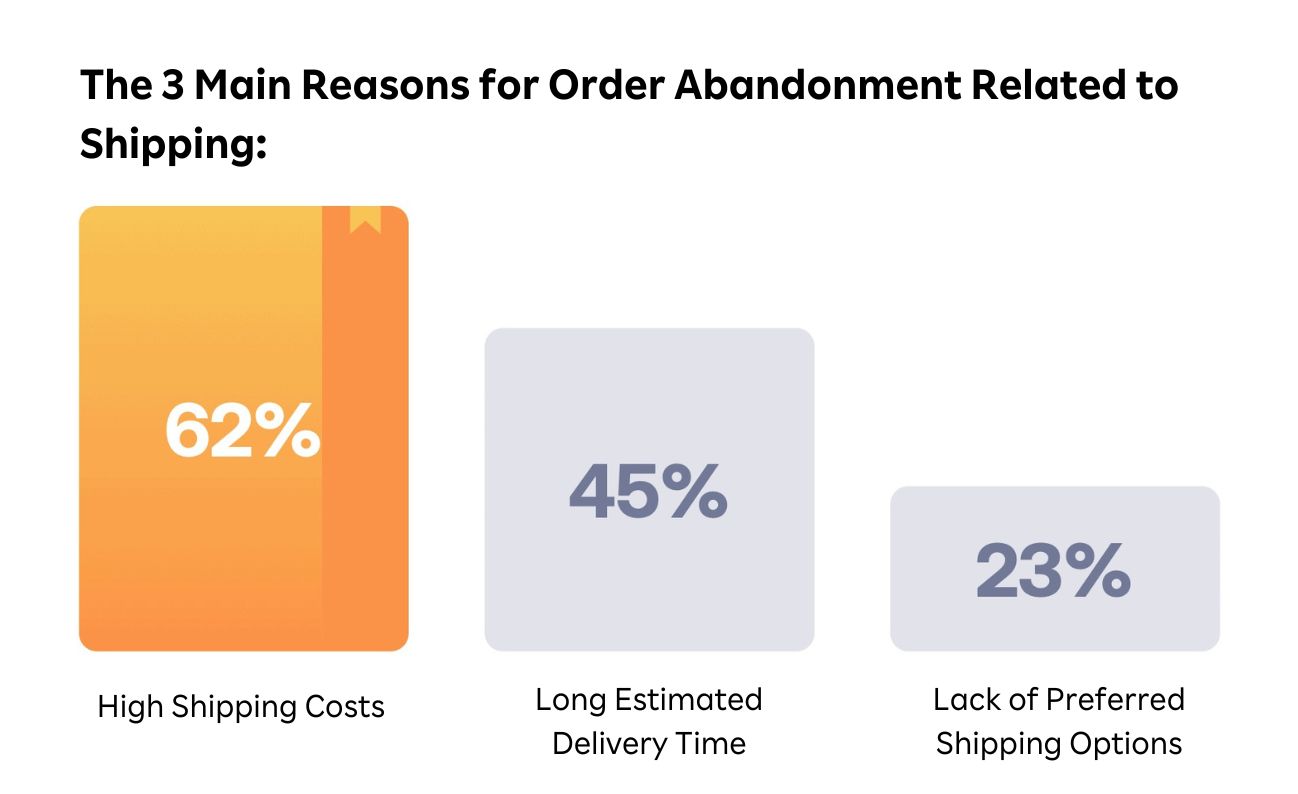 Visual source : Étude Sendcloud, 2023
Visual source : Étude Sendcloud, 2023
The presence of delivery charges is even the main reason for shopping cart abandonment. Today, according to the Baymard Institute (2023), this abandonment rate is close to 70%! The best way to limit the loss of customers is to listen to their desires. Shipping is at the top of the list: 66% of American consumers expect free shipping on all their online purchases (PR Newswire, 2021). In France, according to Sendblue, 35% of French buyers expect free delivery on orders of €150 or more.
And do you know what your customers' expectations are? When creating your business plan, take into account the study of your target... To offer the best possible customer experience, including free shipping, under certain conditions to be defined.
2. Build customer loyalty
A satisfied customer is more likely to remain loyal. So offering them shipping costs will make the experience more pleasant... It lays the foundations for a lasting relationship based on trust, which will make them want to buy again from your e-commerce site or marketplace.
After all, delivery is a crucial element in the customer relationship. It even simplifies the purchasing decision. When it's time to validate their shopping cart, Internet users don't have to worry about additional costs. Less friction at the point of purchase means a greater chance of returning later!
By building customer loyalty (especially through free delivery), you also increase your profitability. Loyalty is a lever for growth: according to a Harvard Business Review study, a 5% increase in the loyalty rate can lead to an 85% increase in profits. Interesting, isn't it?
3. Align yourself with the competition
Your shipping strategy is directly influenced by your customers' expectations. And these expectations are often conditioned by other players in the market. For example, if a customer has always been accustomed to ordering beauty products with free delivery and no minimum purchase, you run the risk of creating strong purchasing friction if you decide to impose a minimum average basket in this sector.
This is why alignment with the competition is a decisive action. When defining your pricing strategy, analyze other companies in the market. Then choose the positioning that enables you to meet customer expectations, without damaging your brand image and conversion rate.
4. Increase the average shopping basket
The average shopping basket today is €68, compared with €62 in the first quarter of 2022 (source: Fevad, 2023). The good news is that, despite the current economic climate, this figure is on the rise. But to continue increasing the average basket, the best strategy is to offer customers free delivery.
The statistics bear this out: 58% of online shoppers add extra items to their basket to benefit from free delivery (source: Invesp infographic, 2023). So, is the solution to set a minimum threshold, to encourage shoppers to spend more to qualify for free delivery?
Suspense: discover the best ways to reconcile free delivery, customer satisfaction and profitability in the rest of this article.
How to calculate shipping costs ?
To calculate the shipping costs to be applied, the simplest formula is as follows :
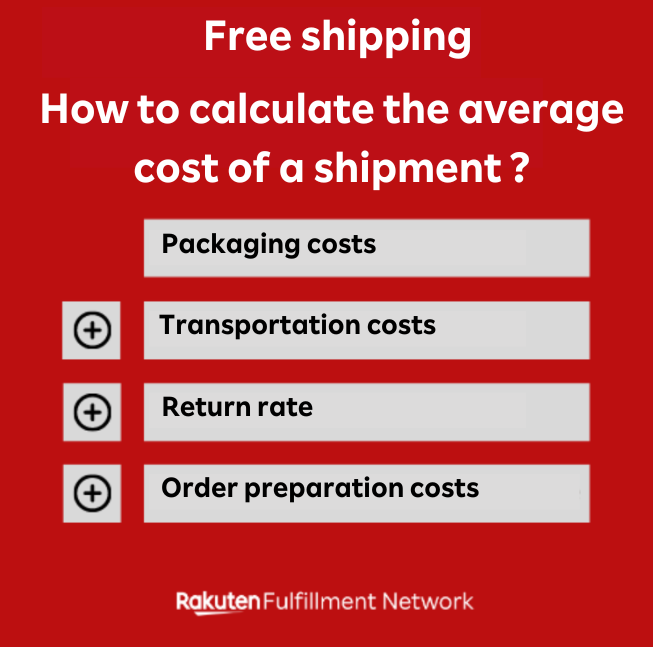
This cost varies (sometimes significantly) according to the customer's geographical area. To optimize your calculations, you can therefore segment your shipping costs according to the zones to be delivered.
Then, to find out whether offering free shipping is a profitable strategy, we invite you to calculate a minimum threshold, above which you can offer free shipping. Here's the calculation to follow:
Shipping cost = average basket + average product cost - shipping cost
So, for example, if your average basket is 30 euros, the average cost of a product is 10 euros and the cost of shipping is 5 euros, the minimum order amount to qualify for free shipping is :
30 + 10 - 5 = 35 euros
Below €35, the sales margin would not be sufficiently attractive.
12 ways to offer delivery to customers
1. Unconditional free shipping
If your sales margins allow it, it's ideal : offer customers free delivery, with no minimum purchase ! With this strategy, you combine the best of both worlds. Satisfied customers and preserved profitability.
But beware: before opting for this method, you need to define and monitor certain performance indicators. Take the time to discover the key KPIs for maximizing your success.
2. Free delivery over a minimum purchase amount
This method is the most common in the world of e-commerce. The principle? Define the minimum purchase amount that allows you to offer free delivery, while remaining profitable.
By following the calculation above, you'll know the minimum amount that will allow you to amortize these costs. As a reminder, you need to know :
- Total costs per shipment
- Average basket per order
- Average sales margin per order
You can also look at the competition to find the right price.
3. Livraison gratuite à partir d’un nombre d’articles
Cette méthode ressemble à la précédente. Sauf que cette fois, la gratuité des frais de livraison n’est pas conditionnée à la valeur du panier d’achats, mais à la quantité de produits dans ce panier.
Pour appliquer ce système, veillez à connaître la valeur moyenne par commande (VMC). Pour que cette méthode soit rentable, on recommande en moyenne de fixer un montant 10 % à 15 % supérieur à votre VMC… À vous ensuite de convertir cette valeur en nombre de produits !
Exemple ? Si votre VMC est d’au moins 20 €, et que vos produits coûtent en moyenne 5 €, vous pouvez offrir la livraison gratuite à partir de 5 produits achetés. Les paniers moyens seront d’environ 23 € en moyenne (soit 15 % de plus que la VMC).
3. Free delivery on a certain number of items or more
This method is similar to the previous one. Except that this time, free delivery is not conditional on the value of the shopping basket, but on the quantity of products in the basket.
To apply this system, make sure you know the average value per order (AVO). For this method to be profitable, we recommend on average that you set an amount 10% to 15% higher than your AVO... It's then up to you to convert this value into a number of products!
For example? If your AVO is at least €20, and your products cost an average of €5, you can offer free delivery on purchases of 5 or more products. Average baskets will be around €23 (i.e. 15% more than the AVO).
4. Free delivery to selected locations
Another option for offering delivery to customers? Free shipping according to geographic zone ! For example, you may decide to offer free delivery only in France. Or in the Paris region.
This method is advantageous for companies wishing to establish themselves locally, and develop a customer base in a specific geographical area.
5. Free delivery with click and collect
More than a third of shoppers (34%) say they would choose click-and-collect delivery. This is 10% more than in 2022. (source: Retail Economics report (2022). At Rakuten, we're also seeing this craze: the number of "pickup" orders has risen from 27% in 2019 to 45% in 2023 !
By offering free click-and-collect pickup, you're not only meeting the expectations of modern consumers... but you're also putting all the chances on your side, to stimulate in-store growth. 70% of people who pick up parcels in-store make impulse purchases once they're there (Global Data, 2022).
If you're a Rakuten seller, this option is easy to set up: you can offer click and collect free of charge for all your stores by activating the Rakuten Instore option.
6. Free delivery on selected products only
To optimize your costs, why not offer free delivery on selected products only ?
For example, on lightweight, low-volume products, shipping costs are marginal... So offer them! Another example? On certain products, your sales margin is likely to be high. To attract buyers, you can also decide to offer free delivery.
Finally, this marketing strategy can be deployed during seasonal sales peaks. Do you have a clothing and accessories e-commerce site? Offer free delivery in summer, for purchases of swimwear or beach accessories!
7. Free delivery on certain days only
Some days are more profitable than others: that's what sales seasonality is all about. For example, do your sales explode during sales, Black Friday or just before Christmas ? Take advantage of these key moments to acquire new customers or build customer loyalty, thanks to free delivery.
It's also a great way to stand out from the competition. And if you can't offer free shipping during the busiest periods, adopt the opposite strategy: offer free shipping during the slowest periods of the year, to clear your product stocks.
8. Offer free shipping only to VIP customers
Free delivery is a powerful loyalty-building lever. In many loyalty programs, it's one of the most convincing arguments. Customers who benefit from this privilege are immediately more committed!
In 2023, 67% of customers say they are even more on the lookout for loyalty programs than before. 39% give priority to exclusive offers and free delivery... So, to meet the expectations of your most committed customers, you now know how to act.
9. Offer product returns free of shipping costs
Unlike physical stores, e-commerce doesn't allow you to see, touch or try out products. So, to encourage customers to place orders, here's a selling point: free returns.
By offering product returns, you're also offering customers maximum security. This gives them peace of mind when it comes to buying. According to a Canada Post survey, free returns are even the second most influential factor, after free delivery, when choosing an e-commerce site !
If you use Rakuten Fulfillment Network, this step is child's play. Find out how you can increase your sales with fast, reliable and cost-effective e-commerce logistics :
10. Free shipping on a future order
Here's a powerful marketing and sales argument for engaging your customers over the long term: offer free delivery on your next order.
To make the most of this advantage, don't hesitate to communicate with your current buyers by e-mail, after a purchase. Then, after a few days, send them a reminder of this special offer. To encourage them to take advantage of it, you can inform them that this offer is limited in time, with an end date in the near future.
11. Include shipping costs in the product price
What if the simplest solution... was to integrate shipping costs directly into the final product price? This strategy is winning over more and more companies in their quest for simplicity on their e-commerce sites.
But it's a double-edged sword. Beware even of its counter-productive effect... Because by integrating delivery into the sale price, the final amount may be higher than that offered by your competitors.
12. Test different approaches
One of the secrets of successful e-commerce sites? They test, improve, iterate and optimize their strategies. That's our final piece of advice.
Before finding the most cost-effective shipping system, don't rush: take the time to test different methods with your target audience. Ask your buyers what they prefer. Co-construction is the key to success !
Offer free shipping on Rakuten
Si vous êtes déjà vendeur sur Rakuten, activer la livraison gratuite se fait en quelques clics. Dans la section “Préférences” de votre Merchant Center, puis dans “Mes modes d’expédition”, vous pouvez choisir d’offrir les frais de port.
Autre possibilité ? Sentez-vous libres de définir un montant minimum de commande ainsi que la zone géographique concernée. Vous pouvez aussi activer le retrait en magasin gratuit, grâce à Rakuten Instore.
If you're already a Rakuten seller, you can activate free shipping in just a few clicks. In the "Preferences" section of your Merchant Center, then in "My shipping modes", you can choose to offer free shipping.
Another option ? Feel free to define a minimum order value and the geographical zone concerned. You can also activate free in-store collection, thanks to Rakuten Instore.
When you join a marketplace like Rakuten, you get the best of both worlds: maximized profitability, on the one hand. A community of over 12 million responsive customers, on the other. What more could you want to launch an e-shop?
Develop your online business on our marketplace:
E-commerce : Essential KPIs to maximize your success
All indicators are green. This is the good news from Fevad, which published the e-commerce report for the year 2022.
The total e-commerce turnover (products and services combined) was 146.9 billion euros in 2022, an increase of 13.8% year-on-year. All e-merchants are actors in this growth. And to support it in the best way in 2023, 2024, and the following years, one step is crucial: to follow and measure its performance, thanks to essential KPIs.
In e-commerce, 11 key KPIs should be followed carefully. Do you know them? Do you know why they are important? And how does Rakuten France help you to follow them, to maximize your growth? All the answers are in this article.
What is a Key Performance Indicator (KPI)?
A Key Performance Indicator (or KPI) is a particularly important numerical data in e-commerce. It is a quantitative measure, which allows measuring the performance of your online store. By tracking different KPIs, you assess the achievement of your important objectives.
So, are you making efficient progress? Do your strategic decisions allow you to achieve significant results? What are the outcomes of your marketing and commercial actions, particularly in terms of ROI?
To answer all these questions, it is necessary to define and measure performance indicators. In e-commerce, there are several types of KPIs to follow, to measure the performance of your online sales site. Ready to discover 11 reference indicators?
The 11 different types of KPIs to measure in e-commerce
1. Turnover
This is one of the most important KPIs. Do you know your turnover (sales) generated by selling your products online? This turnover (excluding and including taxes) is calculated by adding up all the revenues generated by sales.
For regular monitoring of this indicator, calculate your turnover weekly, monthly, then annually. Group these amounts in a dashboard to track the evolution of your sales. By regularly analyzing your turnover, you carefully assess the health of your business!
2. Cost of Purchase
Before selling your products, you had to buy them (or create them). This purchase cost fluctuates throughout the year, depending on raw materials, economic context, etc. It is also referred to as the cost of goods sold. It is important to follow it, to optimize your commercialization prices and maximize your growth!
By tracking this KPI, you make the right commercial decisions to optimize your margins... And this is precisely the 3rd crucial KPI, to strengthen your performance: the commercial margin.
3. Commercial Margin
The commercial margin corresponds to the difference between your final selling price and your initial purchase cost. It's a key element of good profitability! To make a profit, it is recommended to achieve a margin of 50%.
In e-commerce, the commercial margin generally starts at 30%. The larger this margin, the more profitable your online store is. This indicator also helps you define the most appropriate selling price.
4. Number of Orders
Do you know how many online orders you have completed? Daily, weekly, monthly, yearly? This indicator is valuable: it allows you to realize the number of baskets validated and paid for by your customers, over a given period. The goal is to compare the evolution of the number of orders, depending on the seasonality of e-retail.
Note: the number of orders does not correspond to the number of products sold. Turnover also does not give the number of orders made. This separate indicator must be followed diligently, while correlating it with the number of products sold and the average basket.
5. Number of Products Sold
This KPI allows you to observe the number of items purchased on average per order placed. Indeed, your consumers may buy one product at a time, or 3, or 10... What is the trend that emerges from their e-commerce buying behaviors?
Beyond tracking this KPI per order, also think about analyzing this indicator globally (the total number of products sold over a given period).
6. Cart Abandonment Rate
The cart abandonment rate measures the percentage of customers who add one or more items to their cart without finalizing their purchase. To calculate it, it is necessary to divide the number of orders placed by the number of abandoned carts, and multiply by 100.
The average cart abandonment rate is between 60 and 70% for an e-commerce site. It's a rather common situation, which also concerns physical commerce: not all visitors who enter a store necessarily buy products.
This KPI allows you to realize the number of visits that did not result in conversion, and to identify why. Too complex purchasing or payment process, high delivery costs, difficult returns and refunds... These are the main reasons.
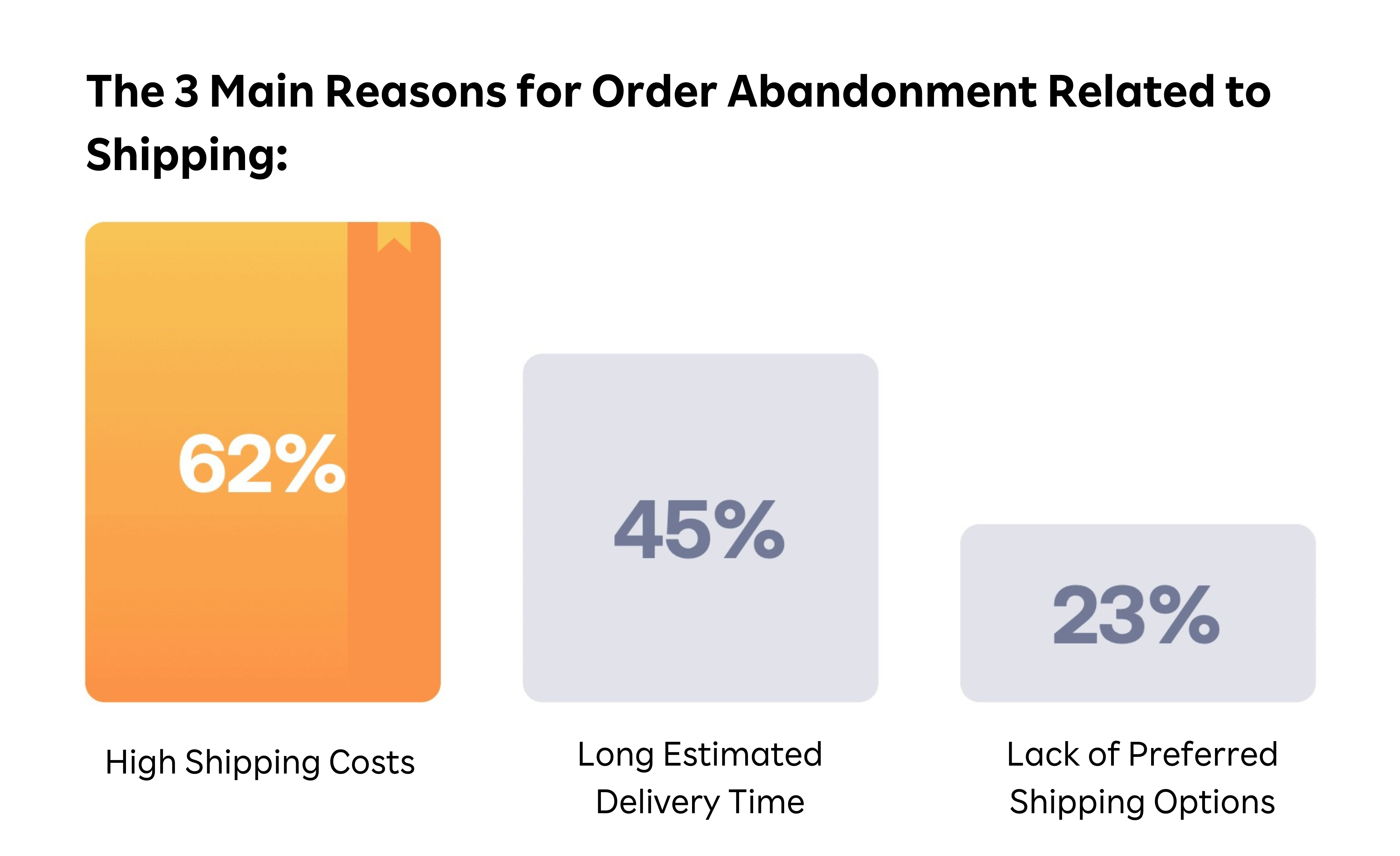 Source of the graph : Étude Sendcloud, 2023
Source of the graph : Étude Sendcloud, 2023
7. Conversion Rate
The conversion rate is a fundamental indicator that measures the percentage of your website visitors making a purchase. From this conversion rate, you can gauge the number of visitors you have successfully converted into customers.
Tracking this KPI helps assess your site's effectiveness in terms of user-friendliness, design, and purchase process. It is perfect for making strategic decisions, launching new marketing actions, and optimizing user experience... To boost conversions.
On average, in e-commerce, the standard conversion rate is considered to be between 2 and 5%.
8. Average Cart Value
The average cart value represents the average amount spent by each customer per transaction. Also known as the "average order value," this KPI provides valuable insights into the average amount spent per e-commerce order... As well as customer shopping habits.
To calculate it, simply take the revenue and divide it by the number of orders. You can perform this calculation to assess the average cart value over a day, a week, a month, or a year. The formula remains the same. Today, the average cart value is about €68, according to Fevad (2023).
Then, after this calculation, it's time for action planning: promotions, cross-selling, marketing campaigns... Discover our guide to strategies for increasing the average cart value of customers in e-commerce.
9. Customer Acquisition Cost (CAC)
The customer acquisition cost (CAC) represents the average cost necessary to acquire a new customer. By measuring it, you'll know how much each new customer costs your business, including the marketing and sales budget. If your acquisition is mainly through Google Ads campaigns, it can be linked to the cost per thousand clicks.
Monitoring this KPI is crucial to evaluate the profitability of your marketing campaigns and adjust your strategy accordingly. To identify the most efficient customer acquisition channels, you can also calculate the acquisition cost per channel. These indicators are valuable to ensure the financial viability of your e-commerce site!
10. Traffic and Traffic Source
Every day, internet users visit your online store. But do you know where this visitor traffic comes from? What are the main channels through which they arrive? And do you know the number of visitors per session, which corresponds to the number of internet users on your e-commerce site during a given period?
All these traffic-related performance indicators are essential. They help establish the number of visitors, the duration of the website visit, and the sources of this traffic. Understanding all this data is crucial to optimize your marketing strategy.
Monitor organic, paid, direct, and social media traffic to adjust your marketing budget accordingly. Balancing these sources strengthens the stability of your business! To obtain all this data, you can consult your Google Analytics tool.
11. Customer Retention Rate
The customer retention rate measures your customers' loyalty. It's also referred to as the loyalty rate. The idea is simple: assess the percentage of customers who return to make a new purchase at your online sales store. To calculate it, divide the number of returning customers by the total number of customers over a period, and multiply by 100.
Customer retention helps reduce customer acquisition costs while contributing to stable growth. Indeed, retaining a customer costs 3 to 5 times less than acquiring new customers... So, take care of your existing customer portfolio to encourage them to stay with you!
For example, have you considered deploying a loyalty program with attractive benefits? At Rakuten France, this is what we offer to our 12 million loyal customers, thanks to ClubR.
How to Integrate Performance Indicators with Rakuten?
As an e-commerce entrepreneur, it is crucial to diversify your sales channels to maximize visibility and reach a broader audience. Creating and managing an e-commerce site is not always enough. Moreover, creating a website is an extremely expensive project: to maximize your growth and profitability, have you considered joining a marketplace instead?
Although e-commerce and marketplace models are compatible, joining an established, renowned platform can be a strategic step in your development. Ideal for boosting your sales and increasing your market presence!
1. Expanding Reach with Rakuten France
Rakuten France offers the opportunity to reach new customers. Over 12 million, to be exact. Indeed, our marketplace is frequented by a large consumer base ready to purchase. For you, this means a continuous flow of customers who already trust the marketplace and the e-shops on it.
By integrating this digital marketplace into your strategy, you automatically track the number of sales and conversions generated from our marketplace. Tracking these data will allow you to assess the impact of Rakuten on your overall revenue and adjust your efforts accordingly. Everything is accessible 24/7 from the dashboard of our solution.
2. Conversion Rate Analysis on Rakuten France
Each marketplace platform has its own audience and buying behavior. From our all-in-one tool, you can monitor the specific conversion rate for Rakuten France, to understand the performance of your products on our platform.
By adjusting your strategy based on these data, you can optimize your product listings and maximize your conversions on Rakuten France. And again, everything is accessible in a few clicks.
3. Inventory and Delivery Management
Integrating your e-shop on Rakuten France often involves managing your inventory and delivery processes. With Rakuten Fulfillment Network, you can reduce your logistical costs with a fixed rate, while delegating packaging, delivery, and order tracking.
However, even if you delegate, you can still closely follow the KPIs related to delivery times, returns, and the availability of your products. To strengthen your reputation and retain your customers on our marketplace, focus on maintaining a quality customer experience.
4. Integration Cost and Return on Investment (ROI)
Integrating Rakuten France may involve initial costs and ongoing fees, depending on the chosen subscription. Your mission (should you choose to accept it) is to track the cost of this integration against the benefits generated on the platform. This will give you a better visibility of your ROI.
With these indicators, you can then make informed decisions to increase visibility on the marketplace, and thus enhance your performance. For example, have you considered improving the SEO of your products, to reach more customers… And thereby generate more revenue, which will offset the cost of integrating the marketplace?
Conclusion: Marketplace or E-commerce, Which Decision to Make?
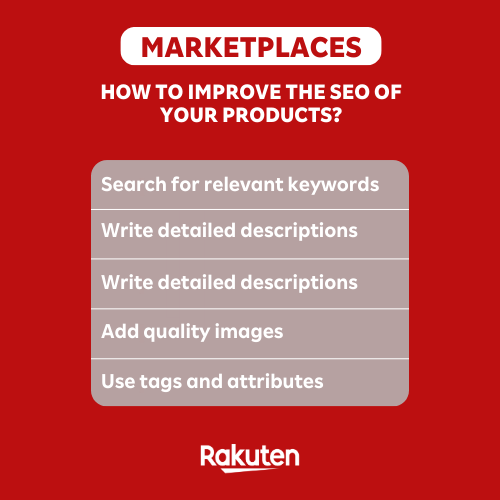
In 2020, marketplaces recorded a growth of 81%, which is twice that of e-commerce (Mirakl, 2021). Since then, the enthusiasm for digital marketplaces has continued. For e-commerce merchants integrating a marketplace, the savings in time and money are very real.
But whether your choice is to create an e-commerce store or integrate a marketplace, there's a habit you need to develop: tracking your performance indicators. On these two online sales channels, it's an essential approach. To ensure the success of your business, you now know the three letters to follow, which will help you at every stage of your development: KPI !




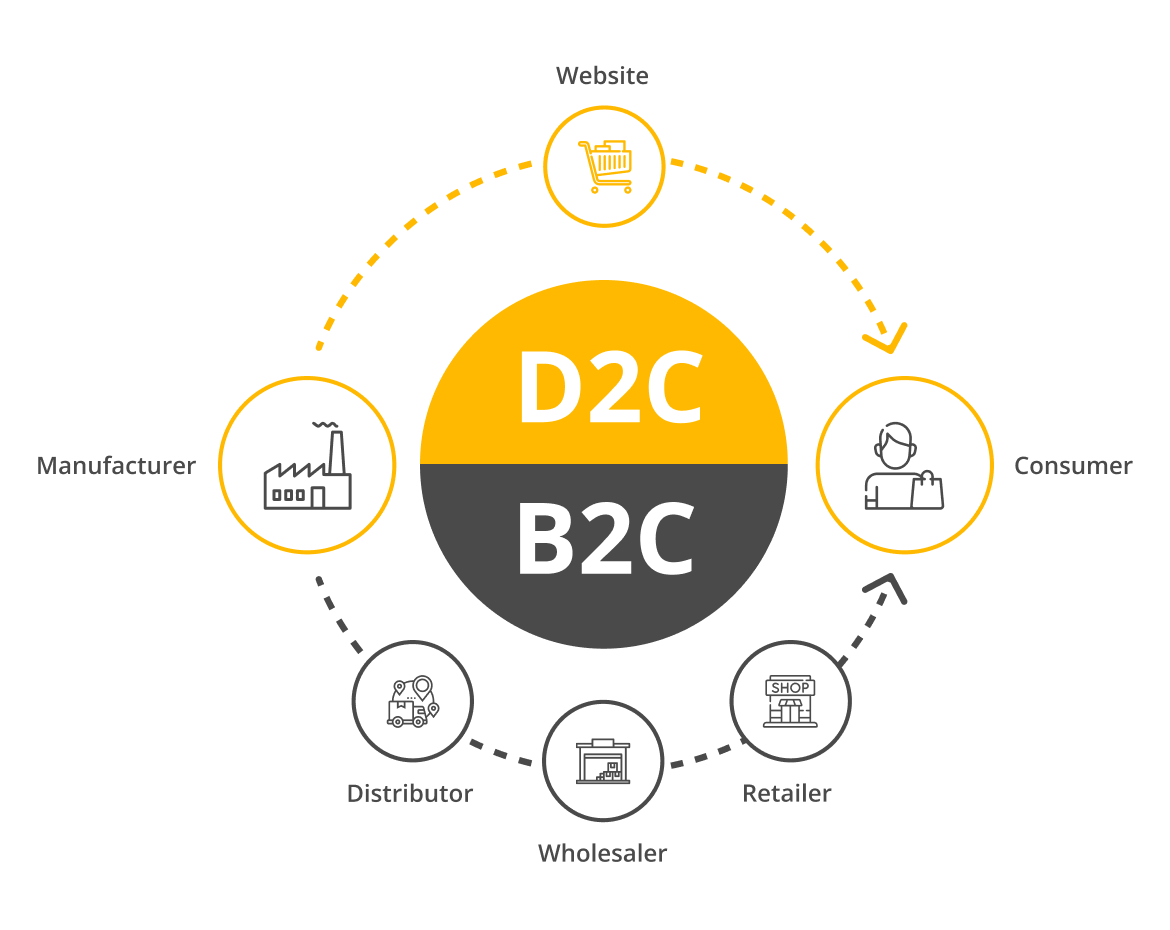 Visual source
Visual source
